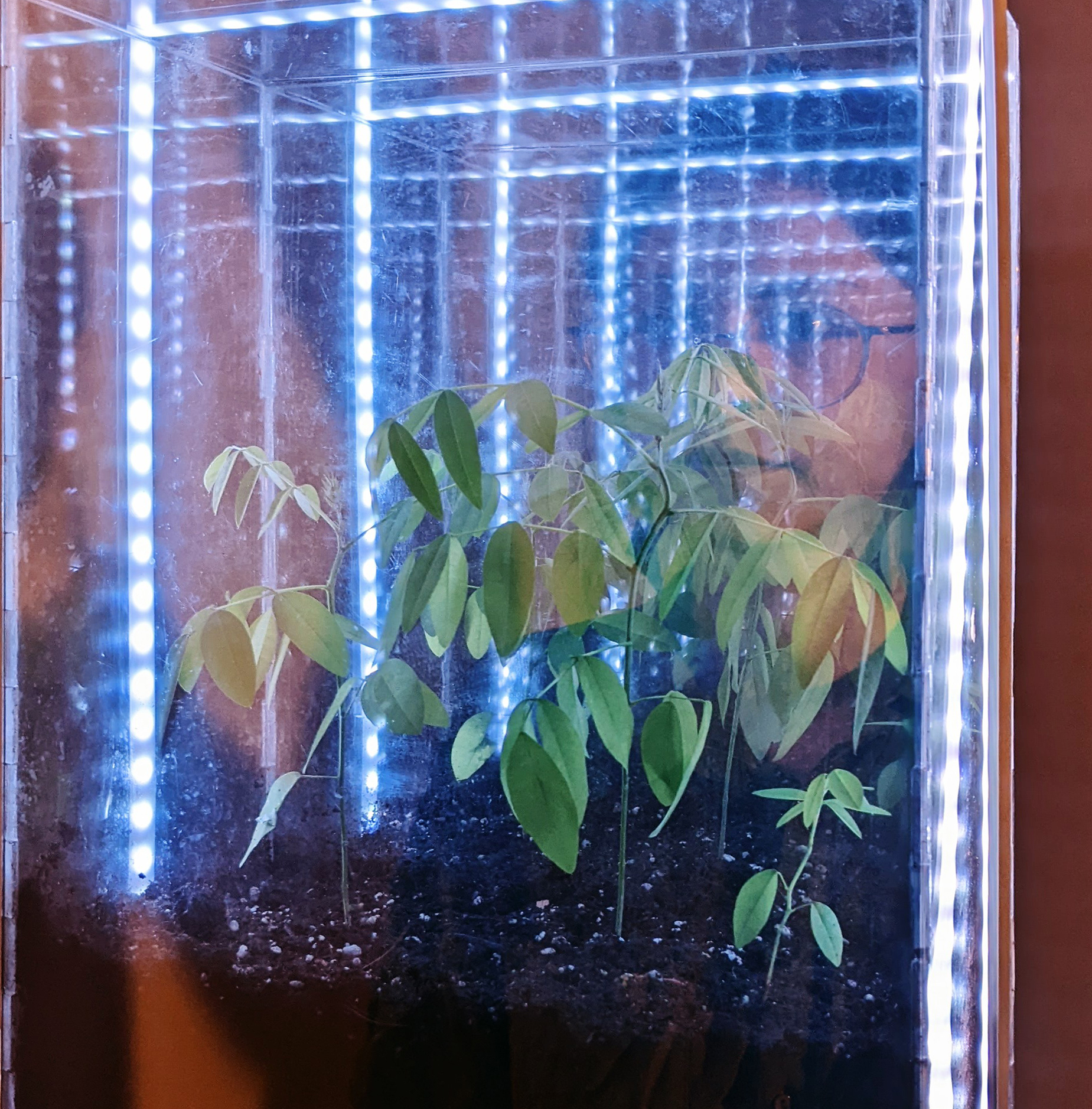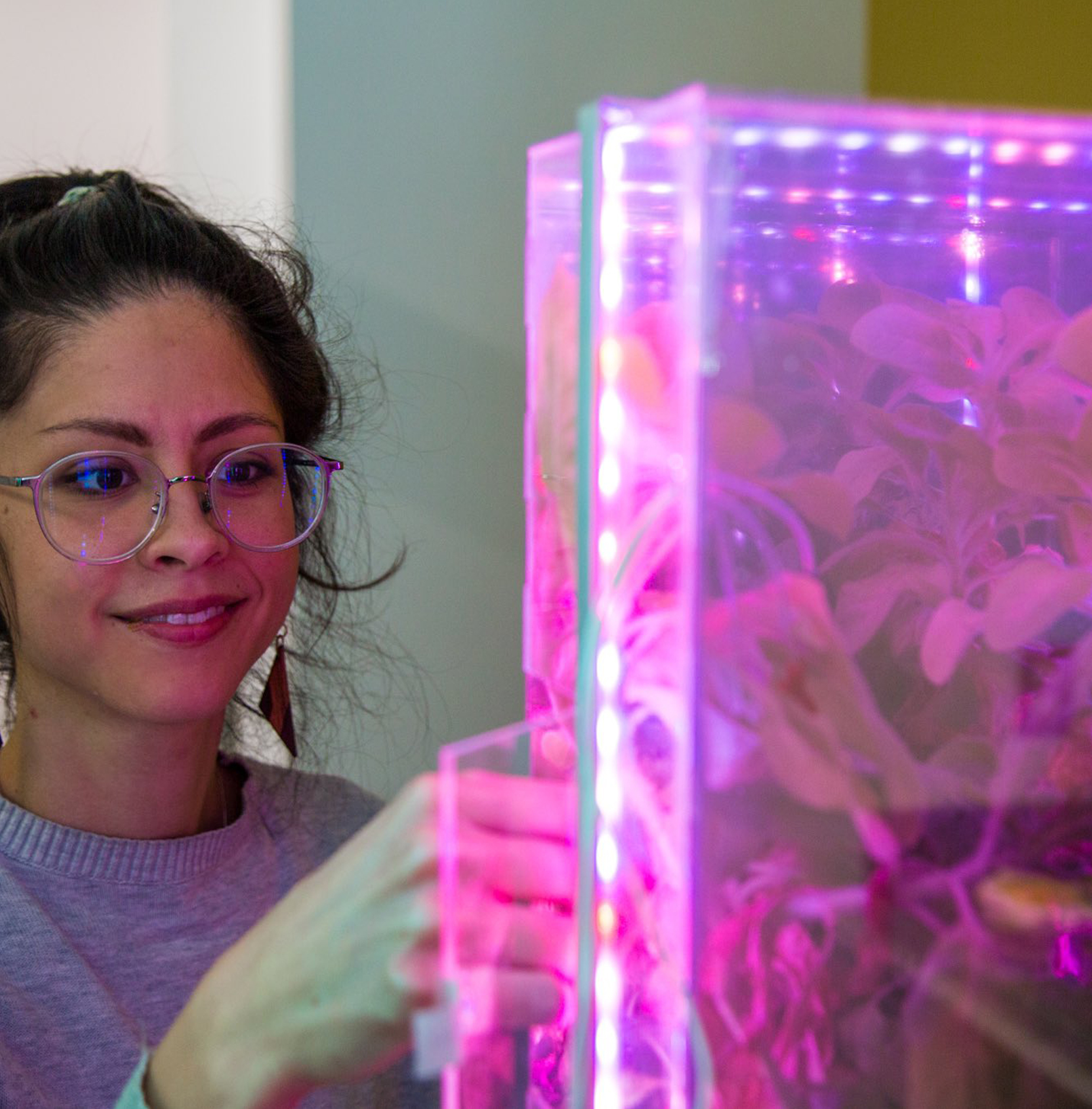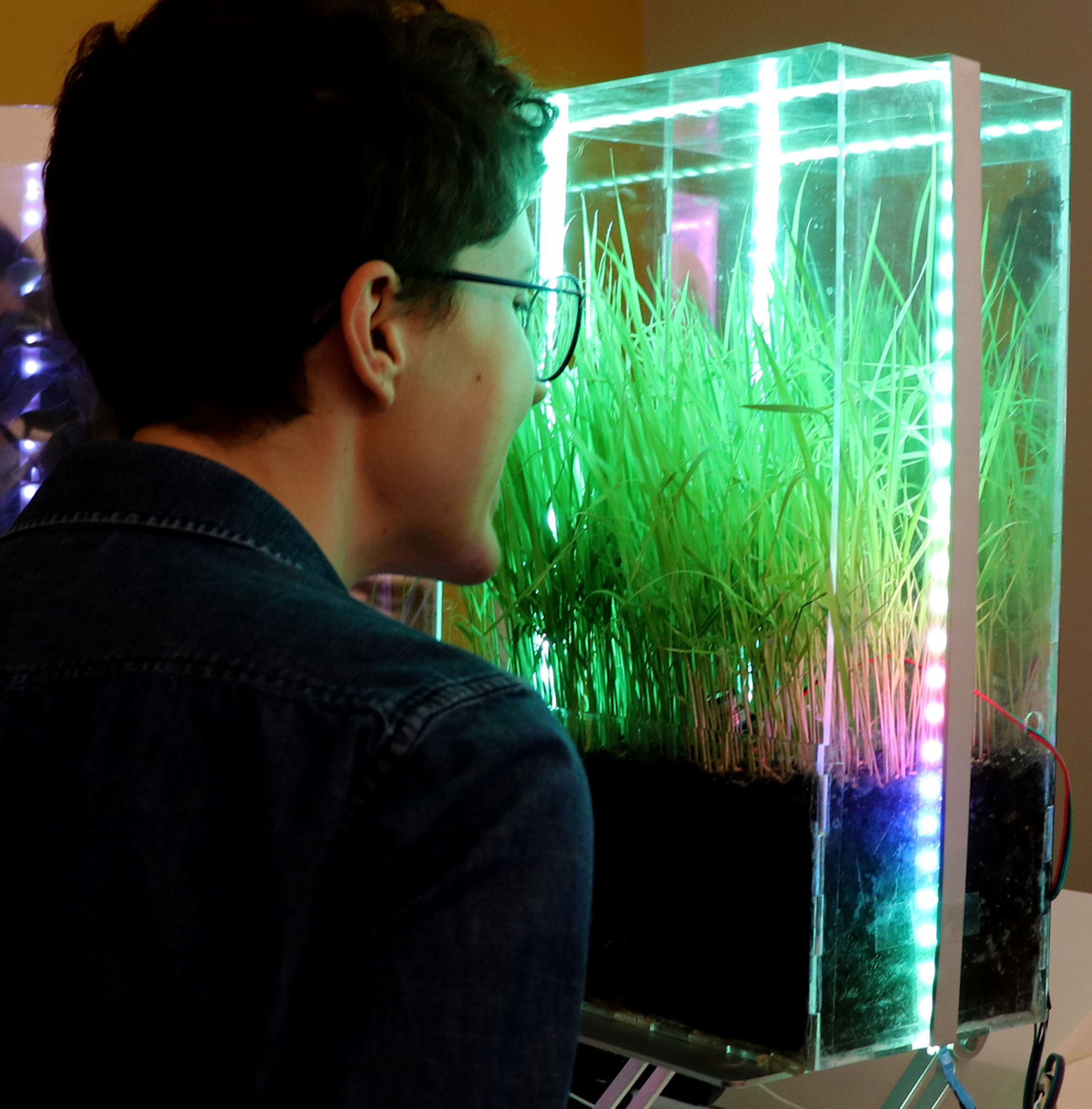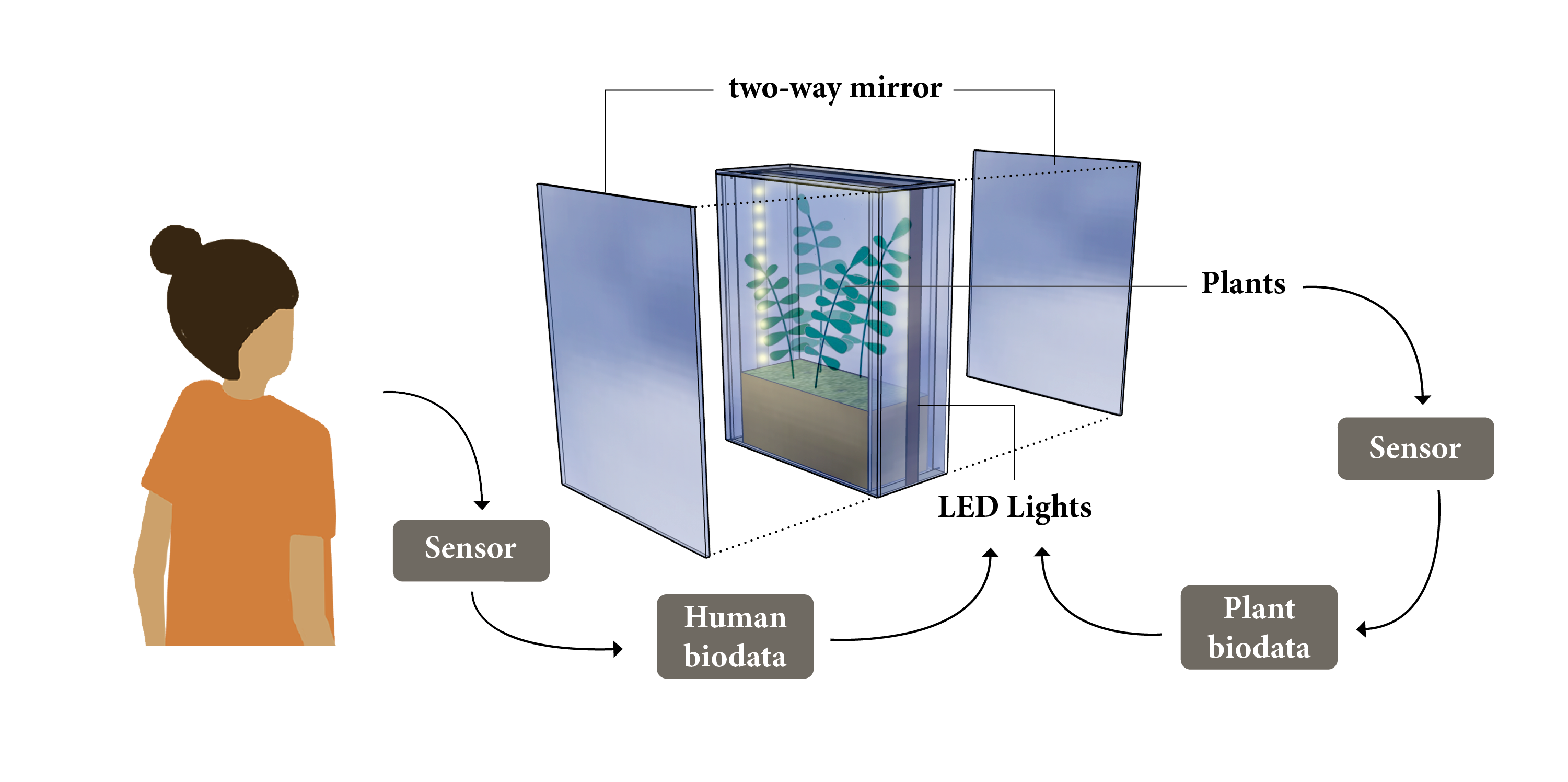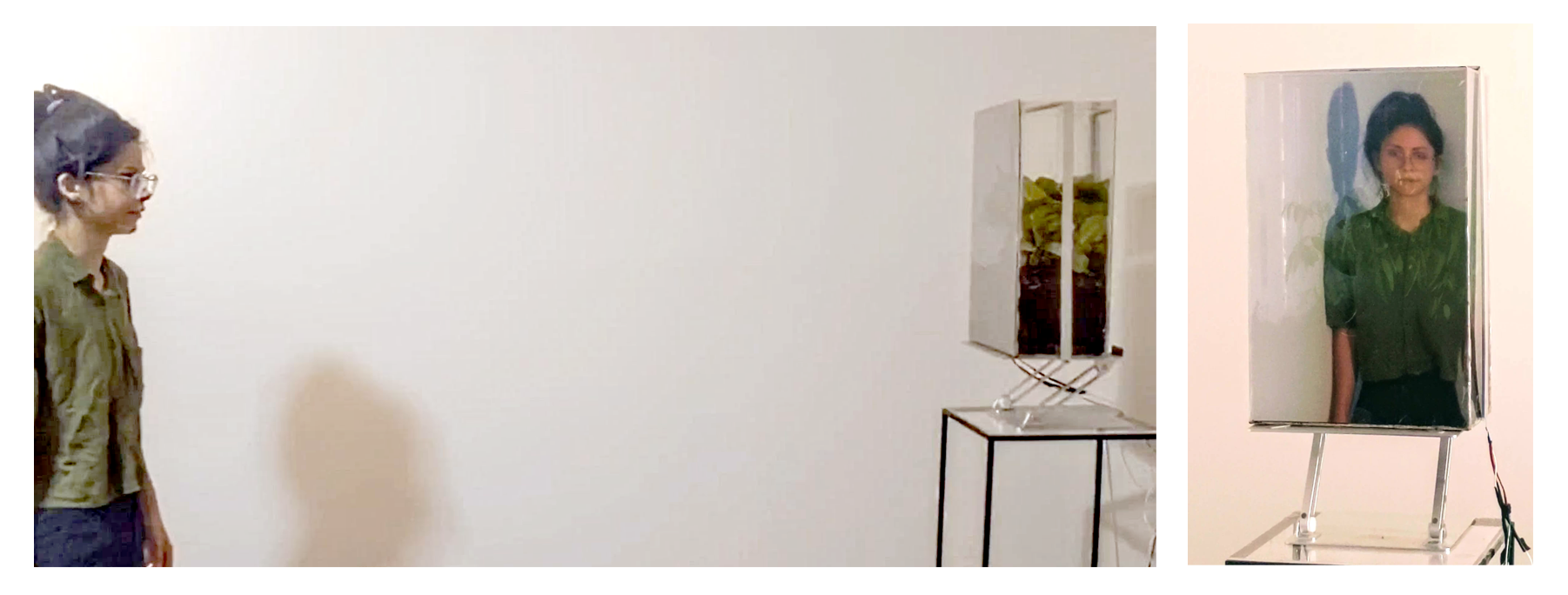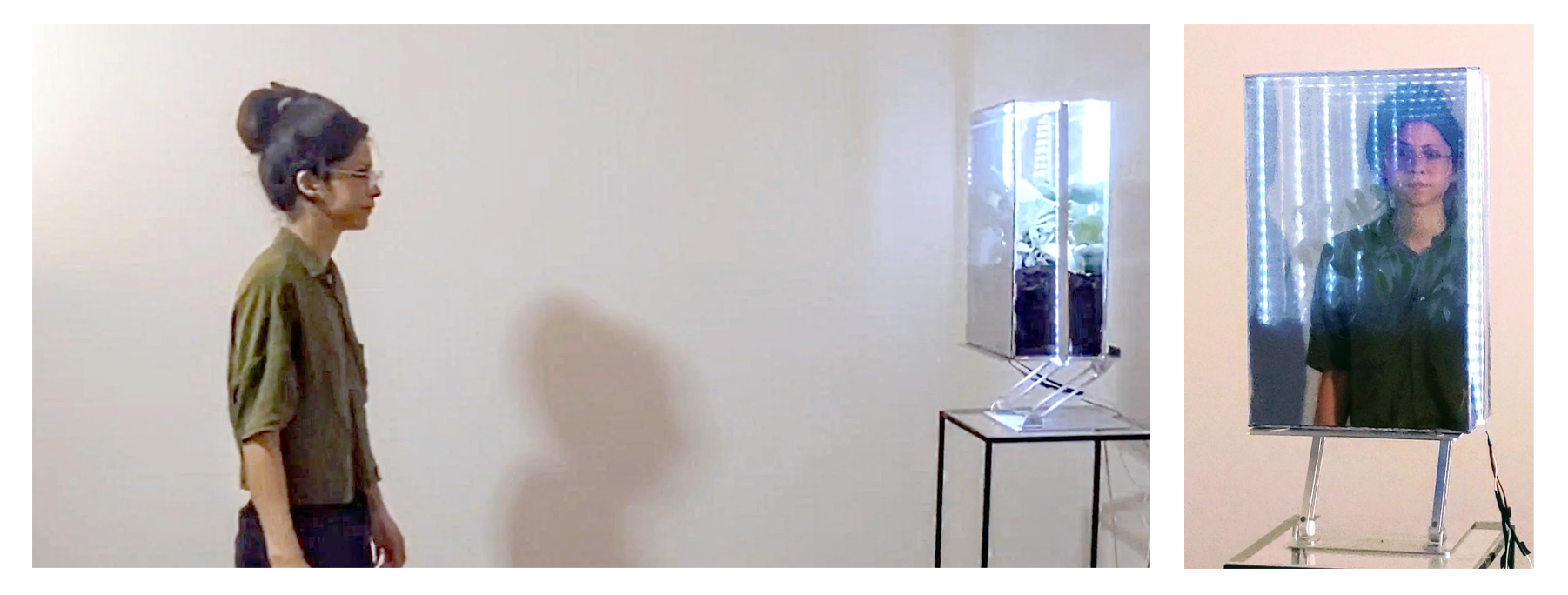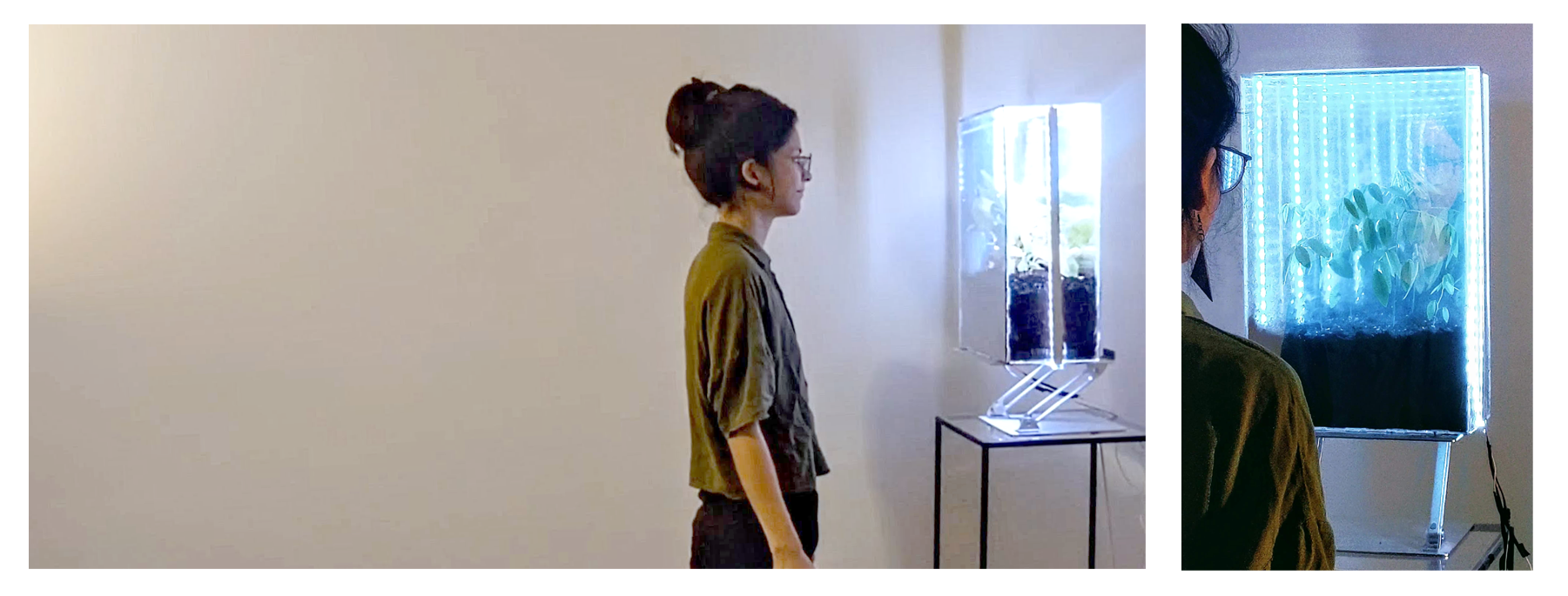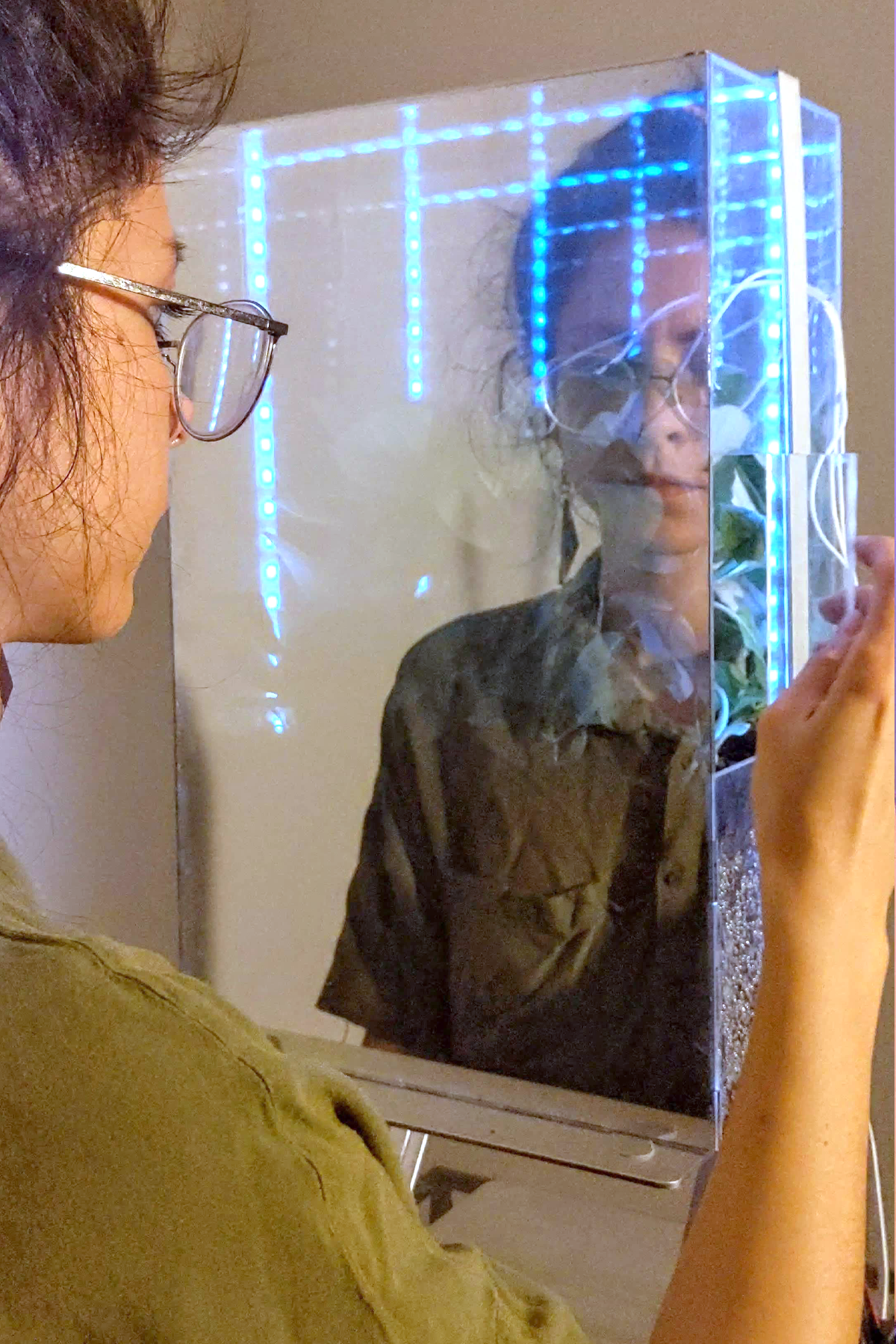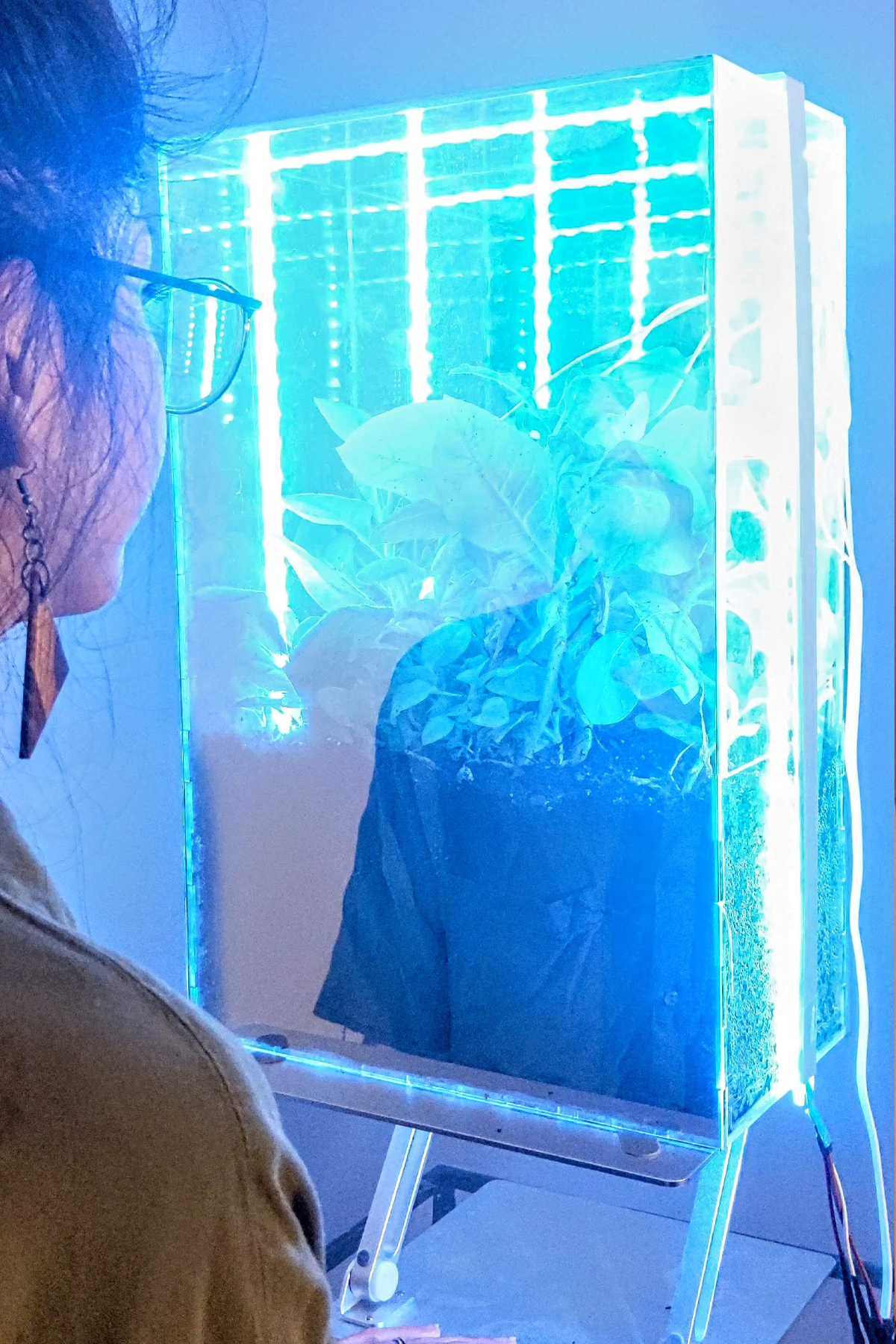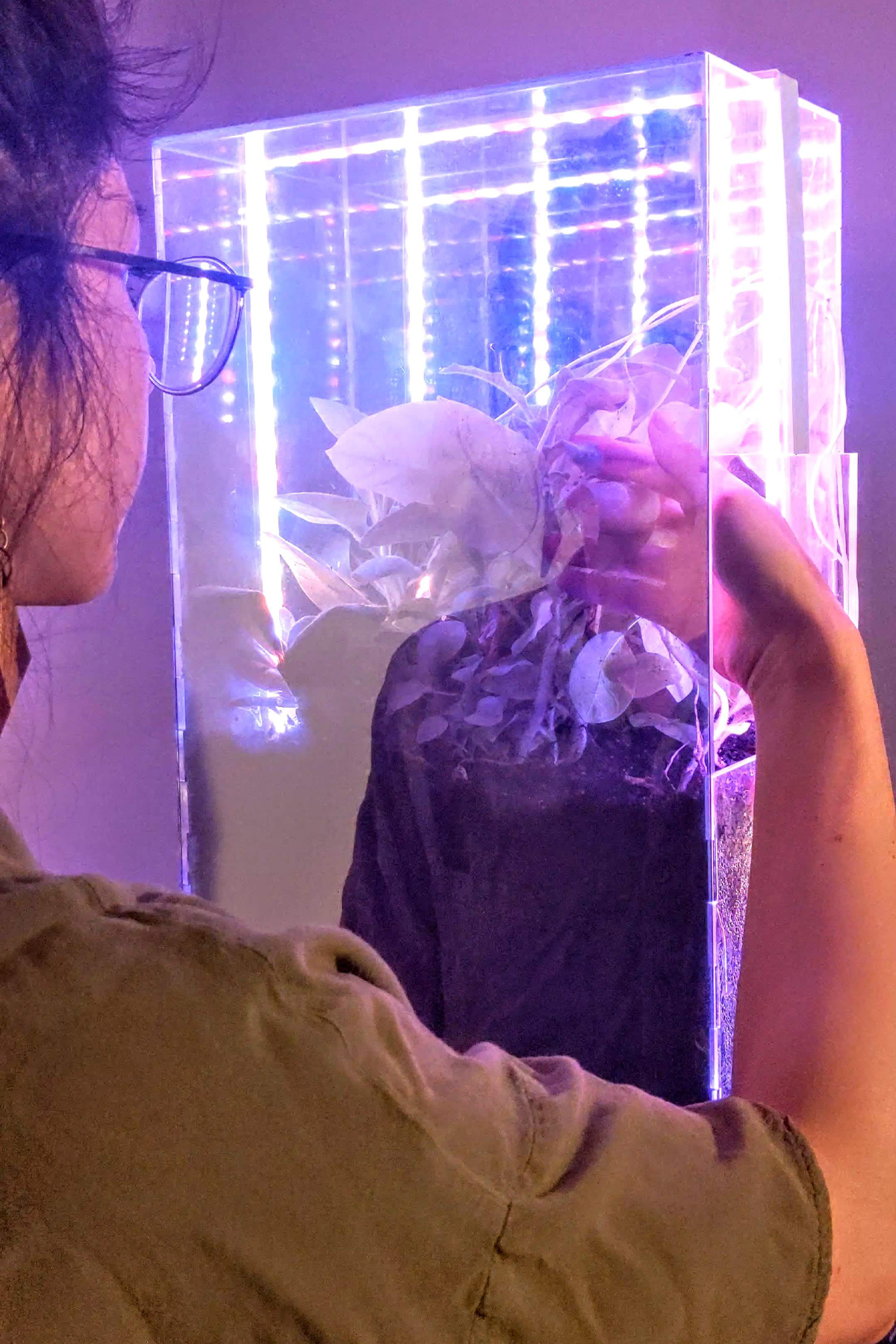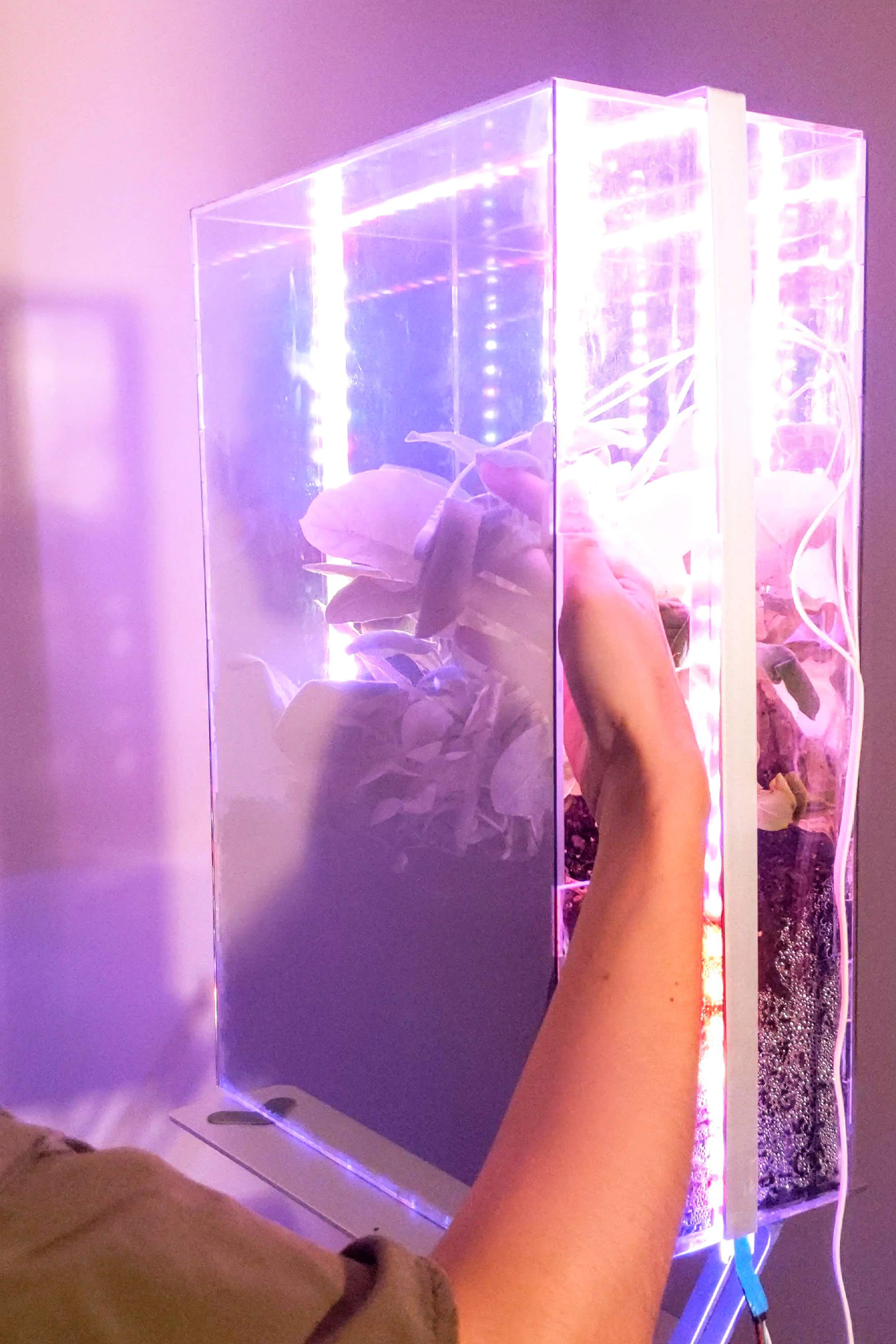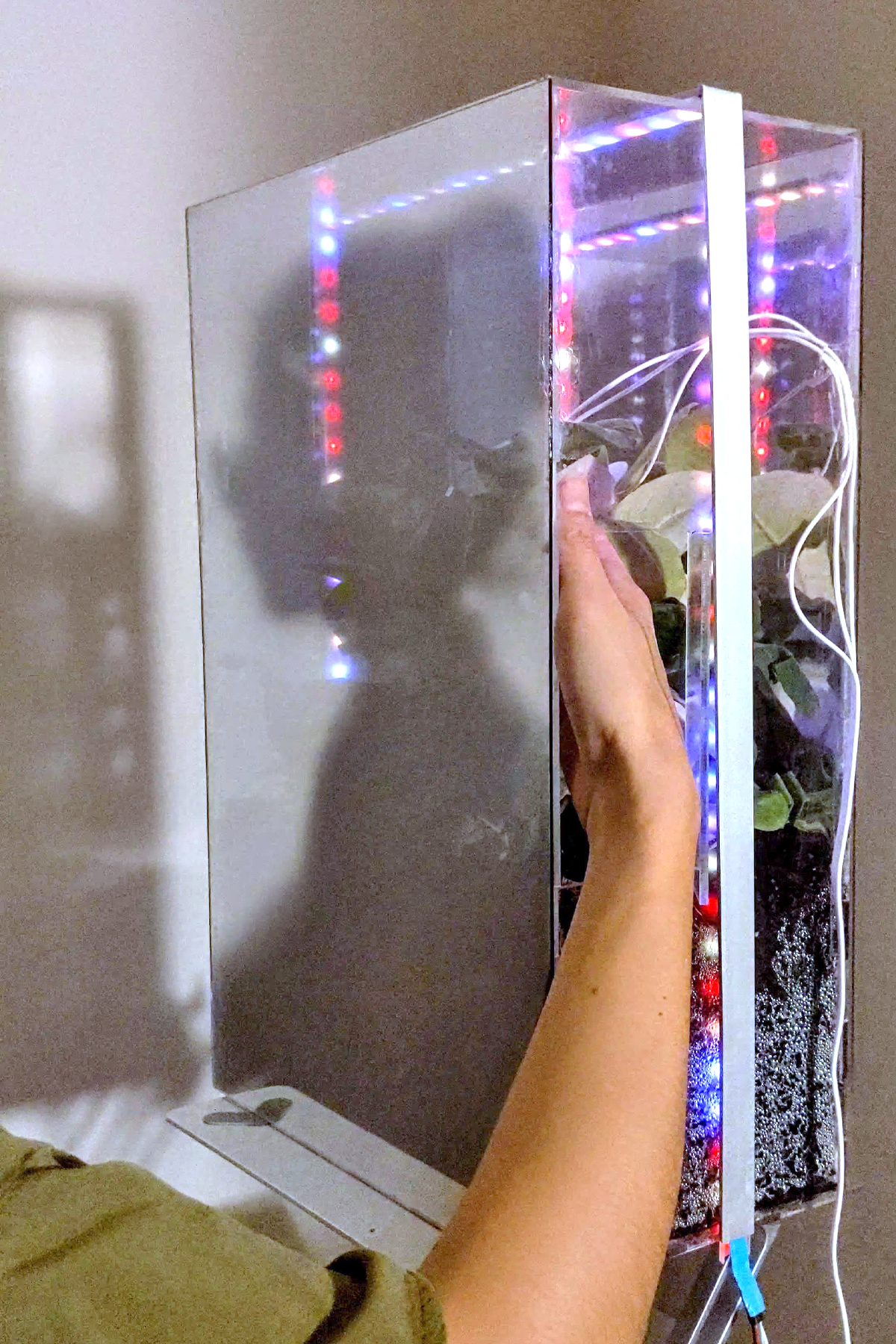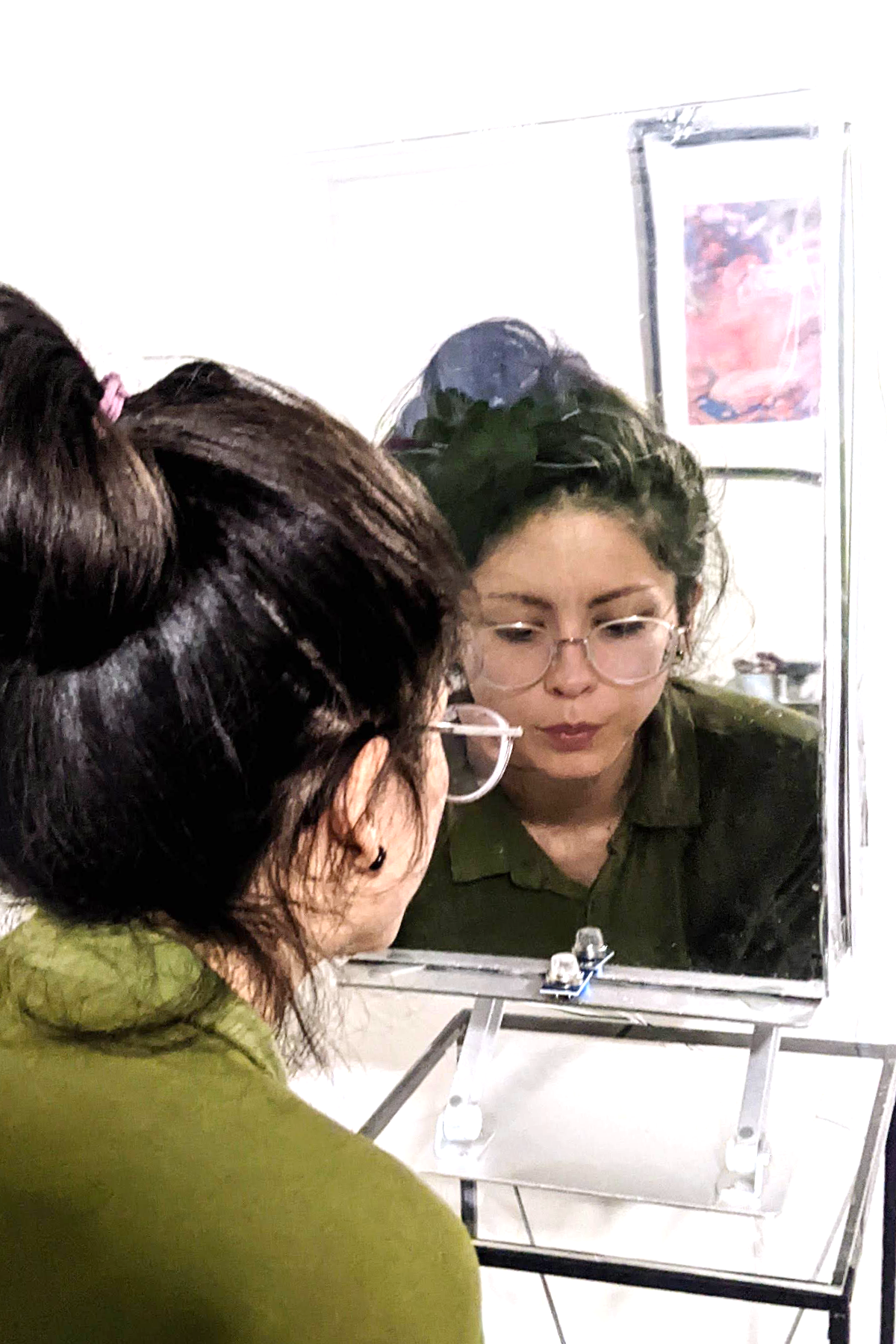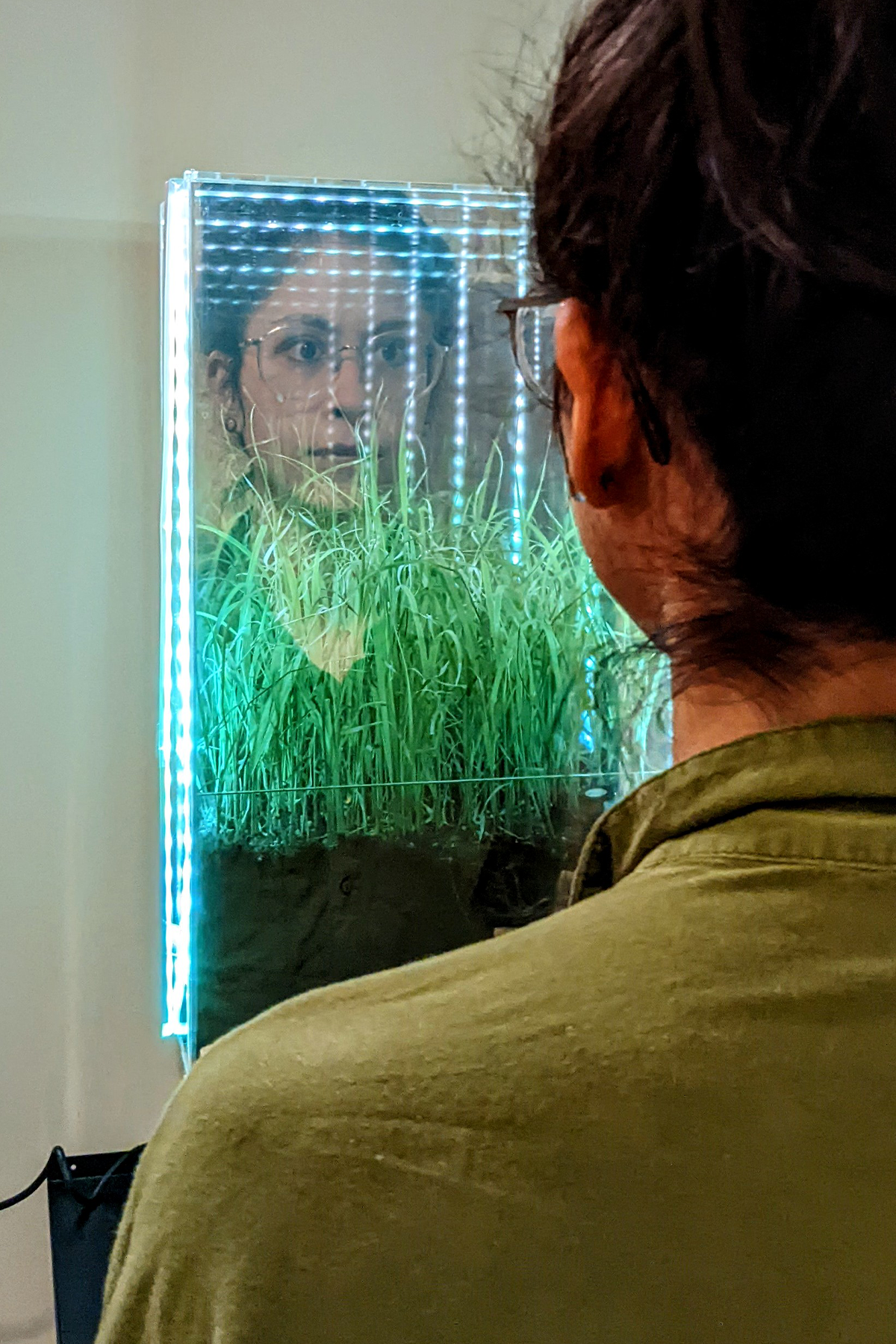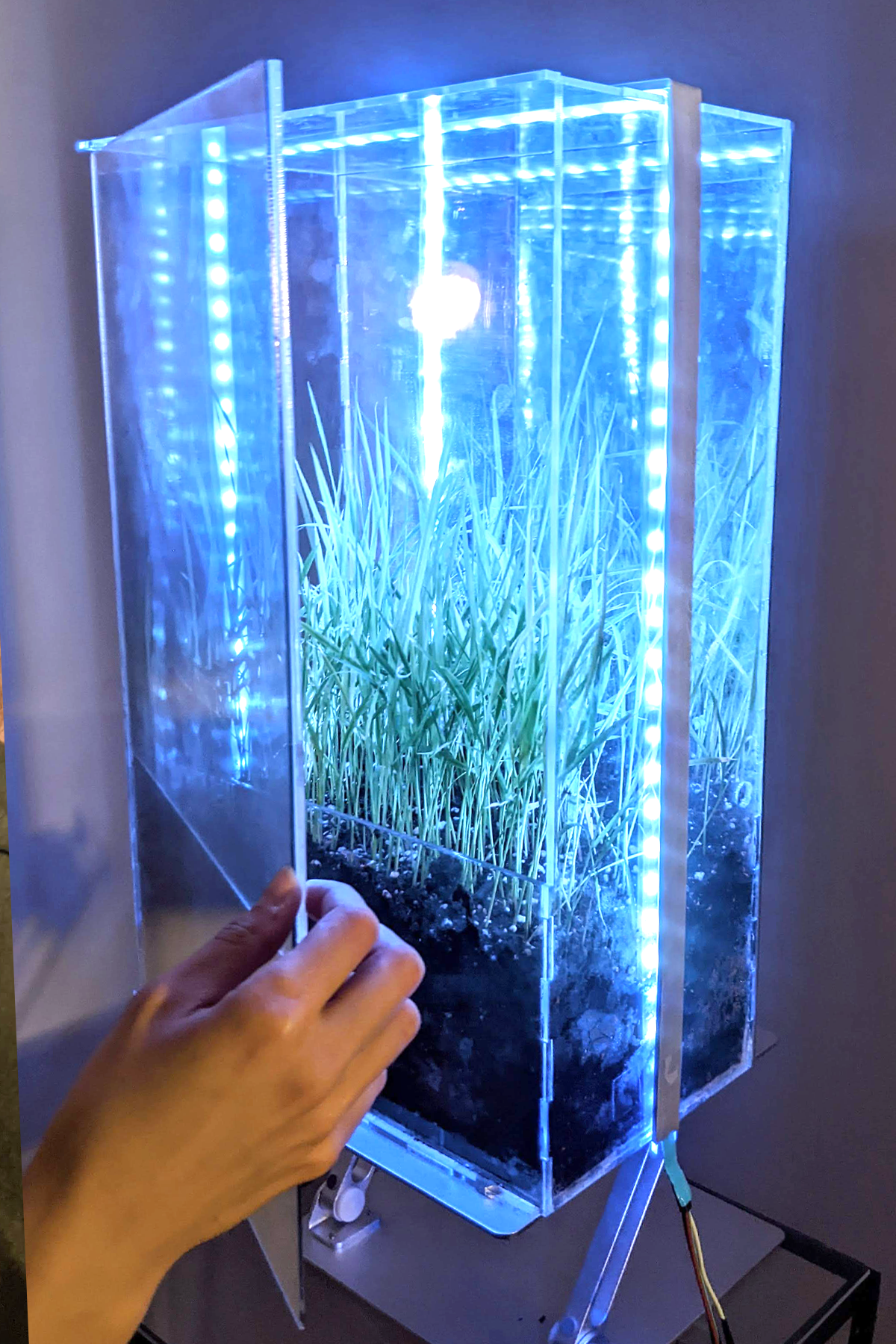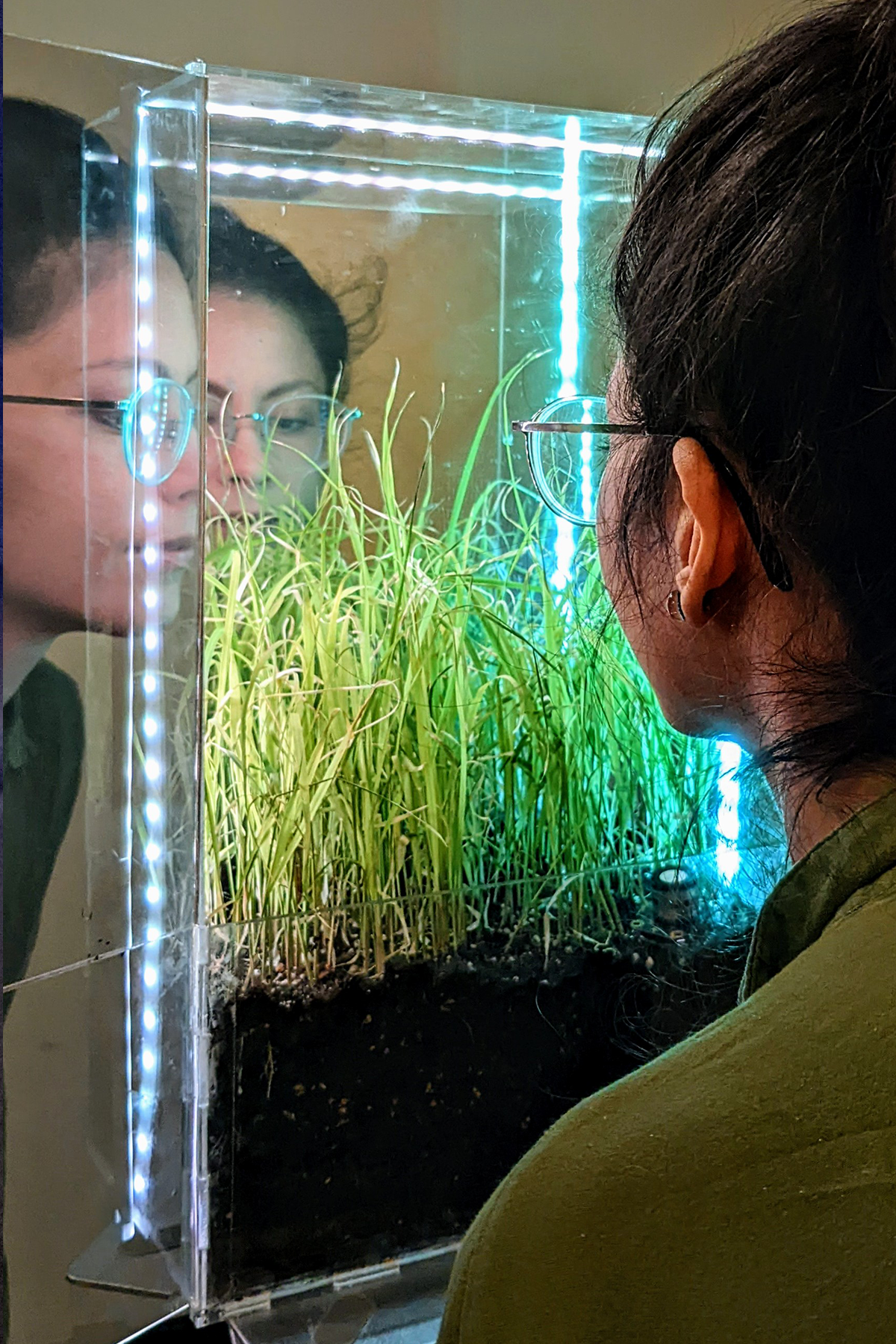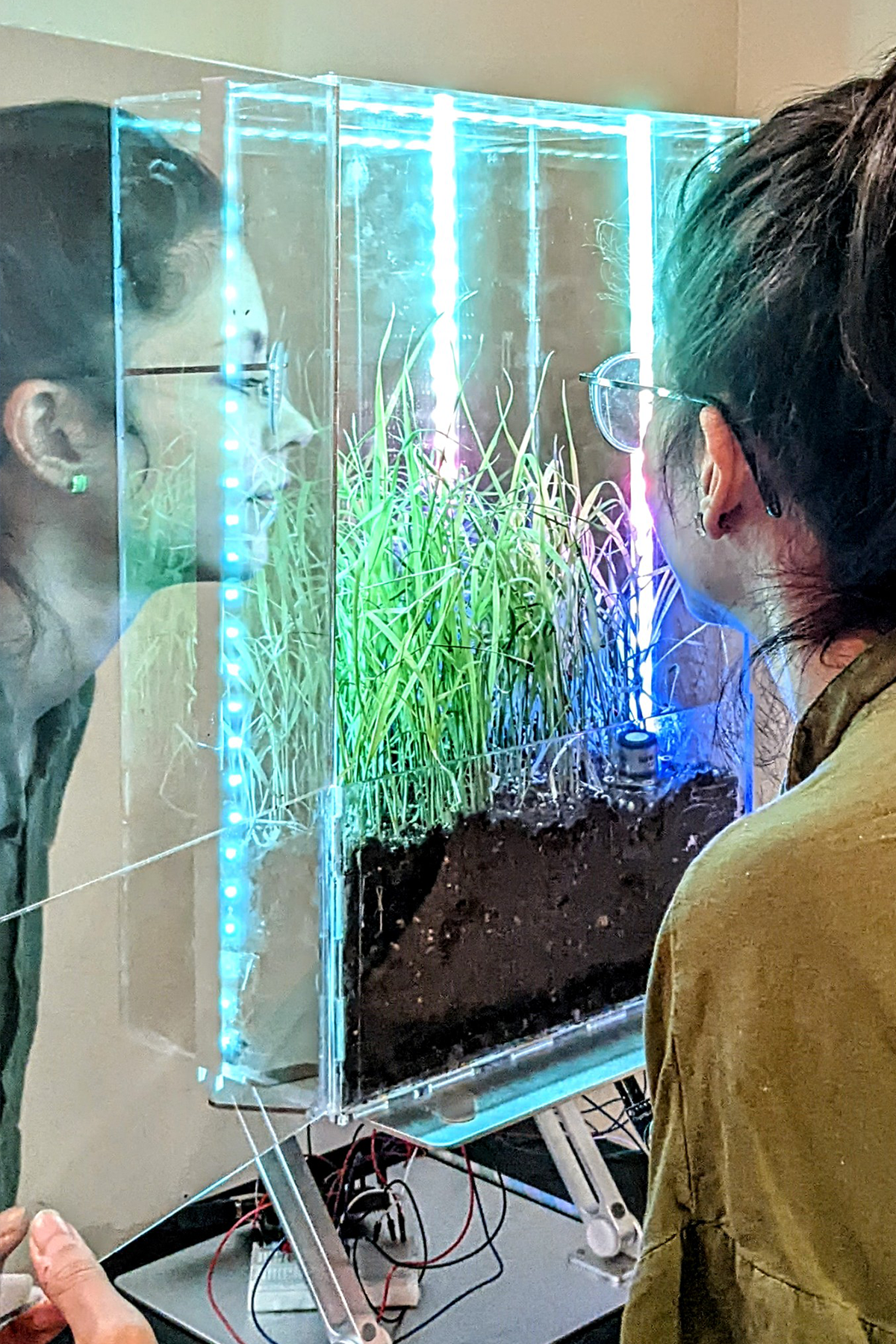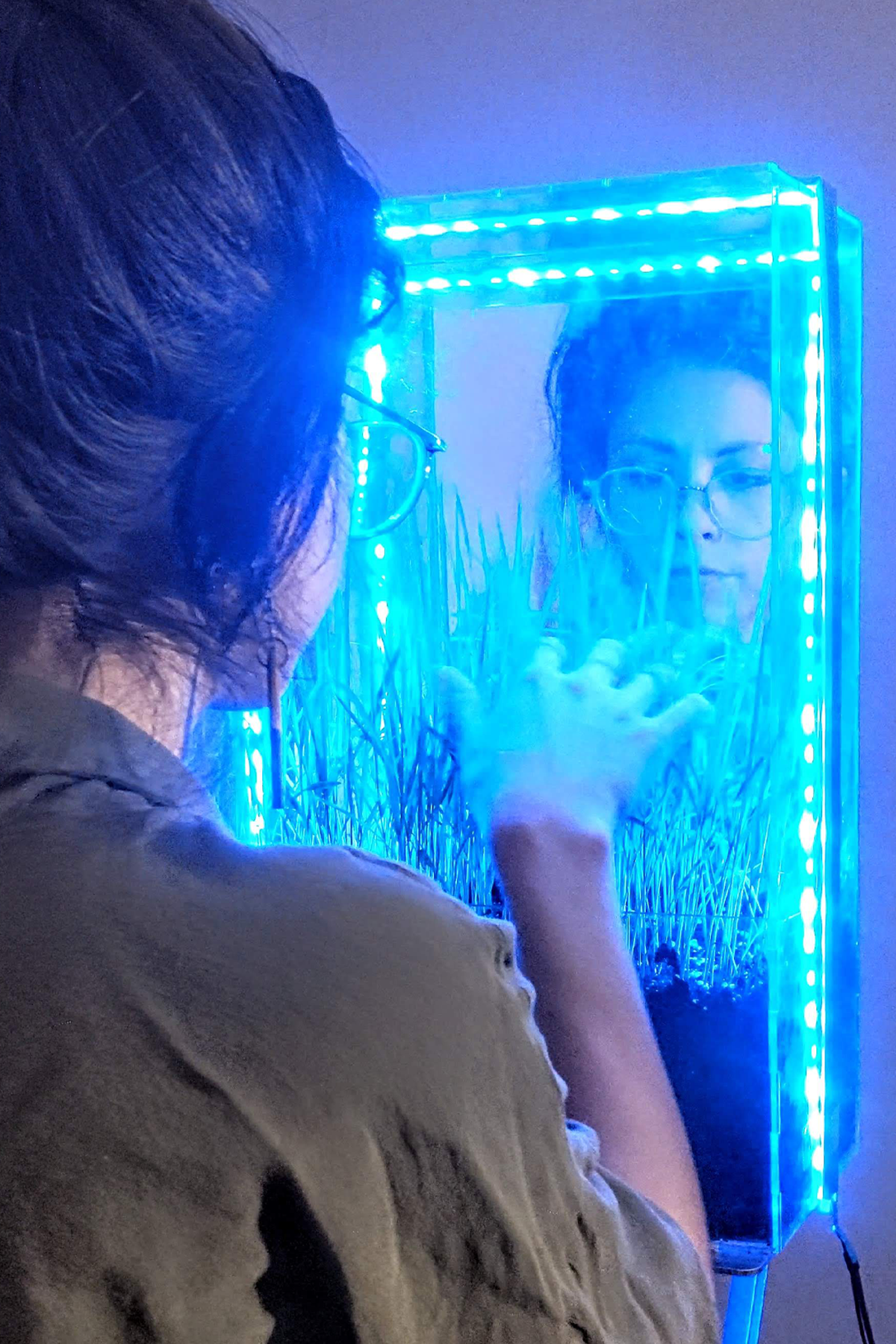Sensing Bodies
Reflecting on Human-Plant Relationships through Biodata Displays of Bodily Encounters
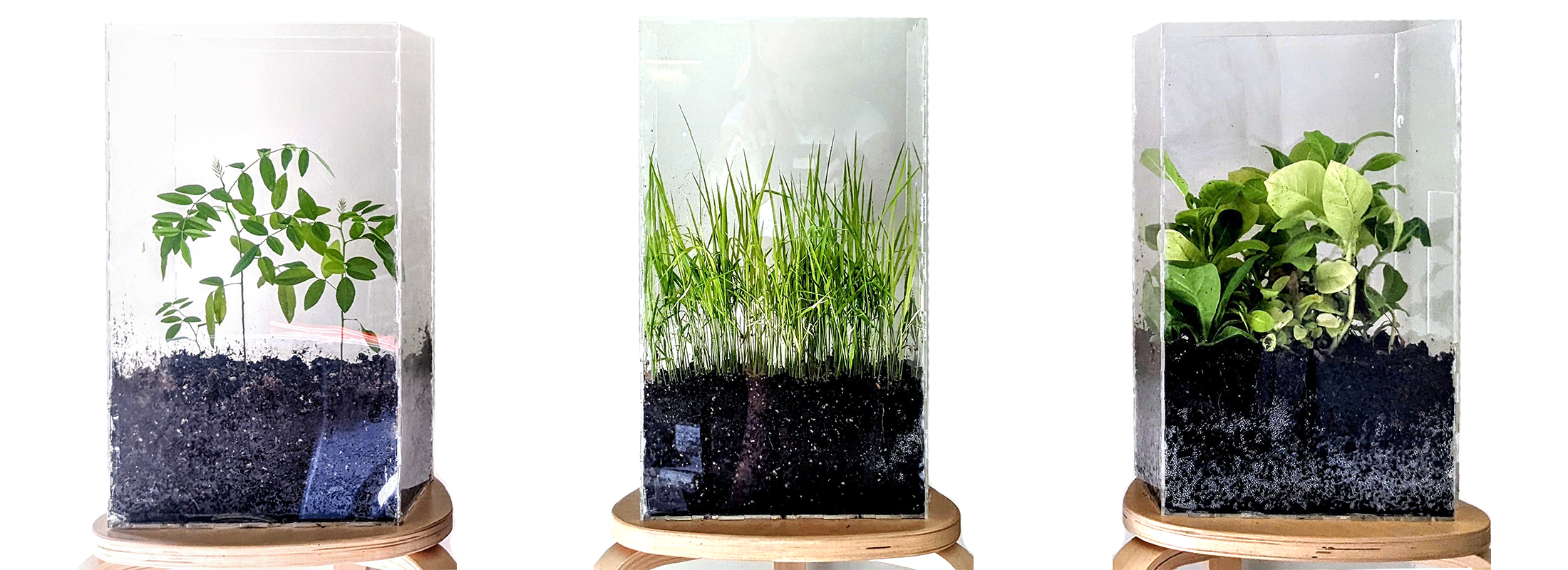
OVERVIEW
How can data creation and visualization foreground the reciprocal relationships between human and plant bodies?
How can sensing practices help draw attention to our embodied relationships to the environment beyond what is immediately sense-able to help us think through deeper landscape histories that shape these relationships?
Sensing Bodies is an art installation that explores the intricate and complex relationships between people and plants. The installation engages with different forms of sensing and relating with more than human others: through sense-able biodata, embodied sensations, and by cultivating deeper sensibility toward embodied histoires entangled with local landscapes and colonial pasts. Through this installation, we explore how human and more-than-human bodies are transcorporeally co-constitutive across species and temporalities. The installation features three interactive exhibits, each showcasing a plantation plant of Georgia - indigo, tobacco, and rice.The plants are connected to bio-sensors that collect and display biodata in LED data displays. The data displays shift with the plant body, environmental conditions, and the interacting participant, highlighting embodied encounters as co-constructed and interdependent between more-than-human agencies. We use plantation plants to further reflect on the complex, ambivalent, and political entwinement of people and plants, unearthing bodily entanglements in the local landscape that go beyond the immediate biological connections foregrounded through biodata.
Shifting Perspective
Biosensors and/or environmental sensors are used to detect specific aspects of the shifting human and plant bodies. The collected data then triggers the brightness, hues, and patterns of the LED lights. Depending on the condition, the viewer would see only their own reflection (if LED lights are off), only the plants within (if LED lights are at full brightness), or a interlaced view of the self and with the plants (if LED lights are dim). This visual effect is intended to shift the anthropocentric self toward a becoming with plants.
EXHIBITS
Exhibit 1: Being with Plants
In the first exhibit, Being with Plants, indigo plants invite participants to approach and come into close physical proximity through a distance sensor that increases the brightness of the LED lights when a body approaches. The physical closeness calls attention to the plant and its long and complex history of cultivation for its alluring blue dye that first led to the legalization of slavery in Georgia.
Exhibit 2: Feeling with Plants
In the second exhibit, Feeling with Plants, the tobacco plant invites participants to touch its soft, tender leaves. An EMG sensor attached to the plant captures electrical signals in the plant body and triggers a spike when the plant is touched. The embodied and reciprocal connection through physical touch probes an ambivalent multi-species intimacy that includes a reflection on its labor-intensive cultivation that spurred plantation slavery in America and largely still relies on exploitative labor
Exhibit 3: Breathing with Plants
In the third exhibit, Breathing with Plants, rice plants invite participants to breathe in its scent and its embodied histories while an oxygen sensor captures readings from the atmosphere, the plants’ photosynthesis process, and the breath from the human participants. The material exchange of breath blurs bodily boundaries, reminding us of different ways of relating to more-than-humans that existed before colonial, capitalist forms of being.
PLANTATION PLANTS
To forground the socio political entanglements of plants with local landscapes and histories, the project spotlights a selection of plantation plants, indigo, tobacco and rice, that reflect on the colonial pasts of the American South. This work centers the concept of the plantationocene, a term that emphasizes how modern environmental problems are driven by a capitalist logic rooted in histoires of colonialism built upon plantations - a site where plant and human bodies entangled in complex, invasive, and ambivalent ways.
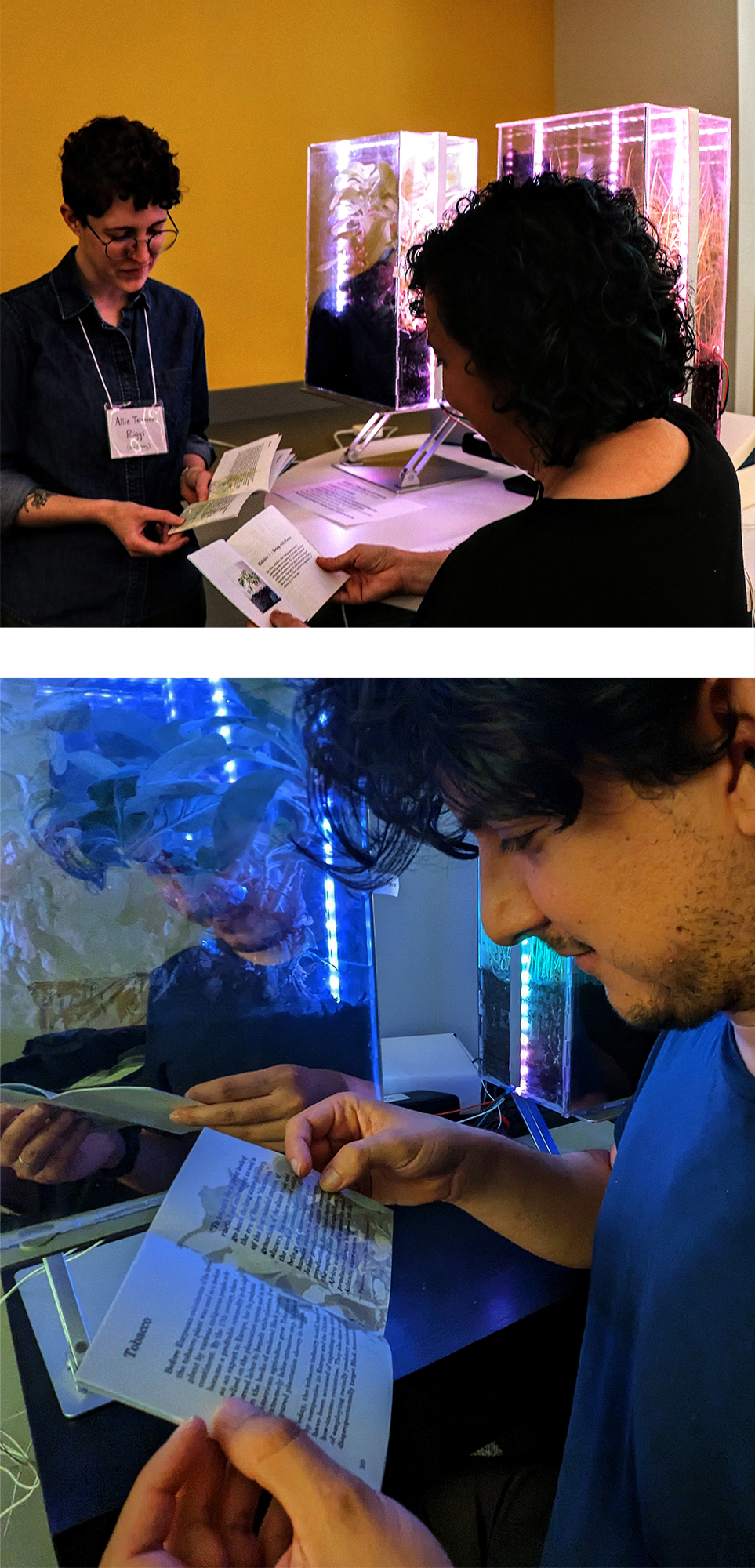
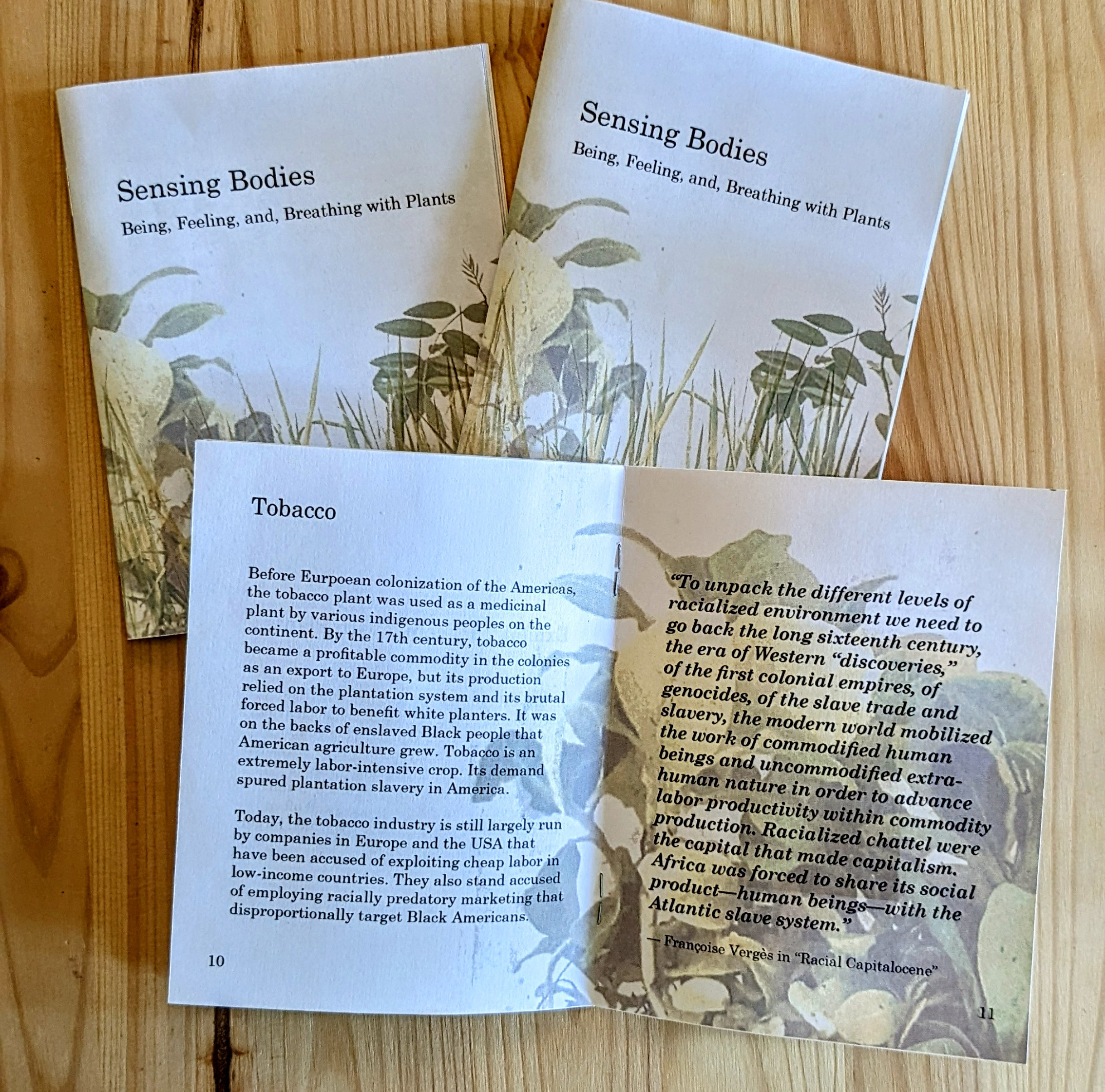
Read about the history of these plants here.
EXHIBITIONS
We have presented this work at:
GVU 30th Anniversary at Georgia Tech in Atlanta, GA, November 2022
This exhibit featured Georgia plantation plants, indigo, tobacco, and rice, that reflected on colonial histories of the American South.
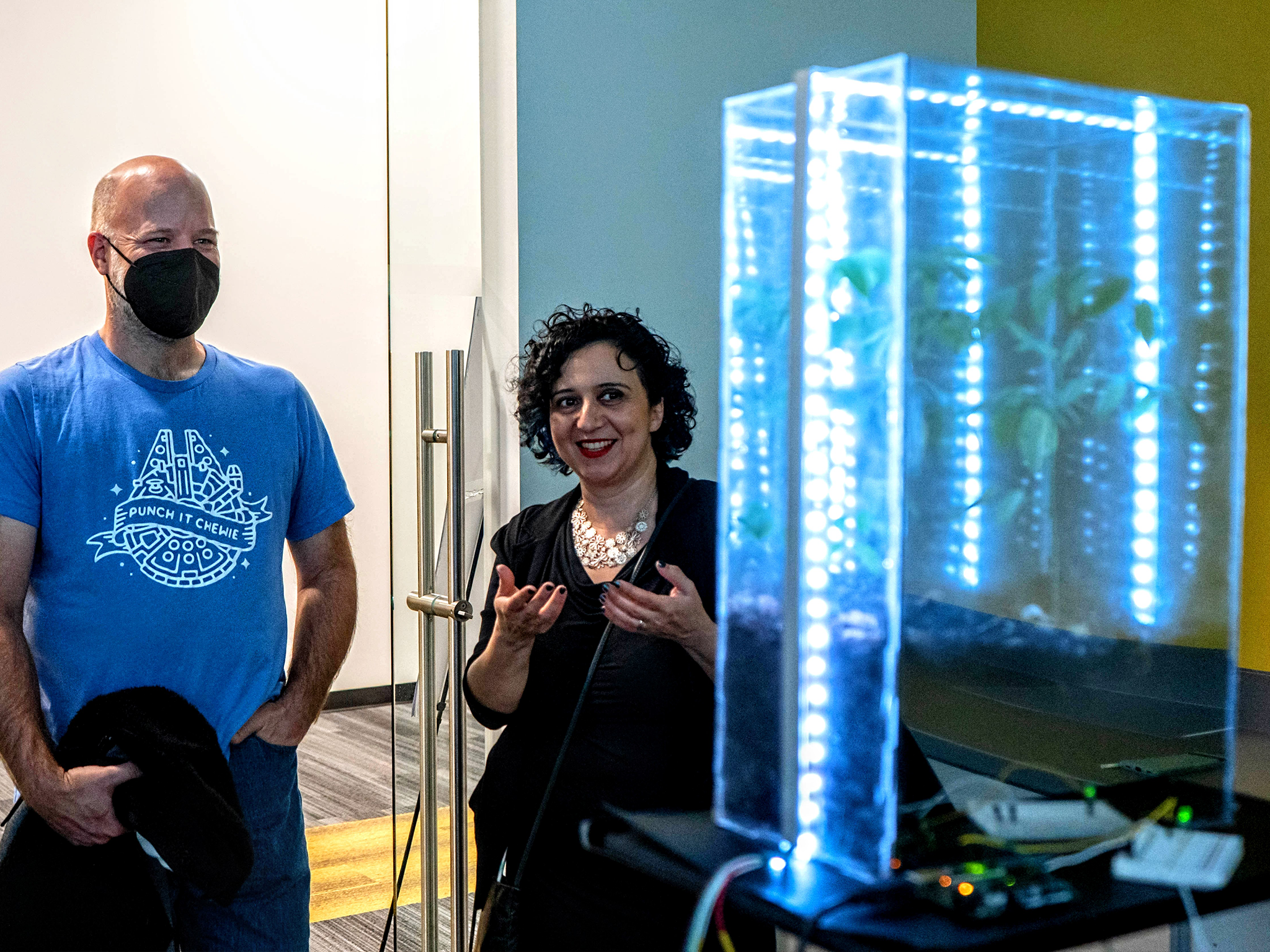
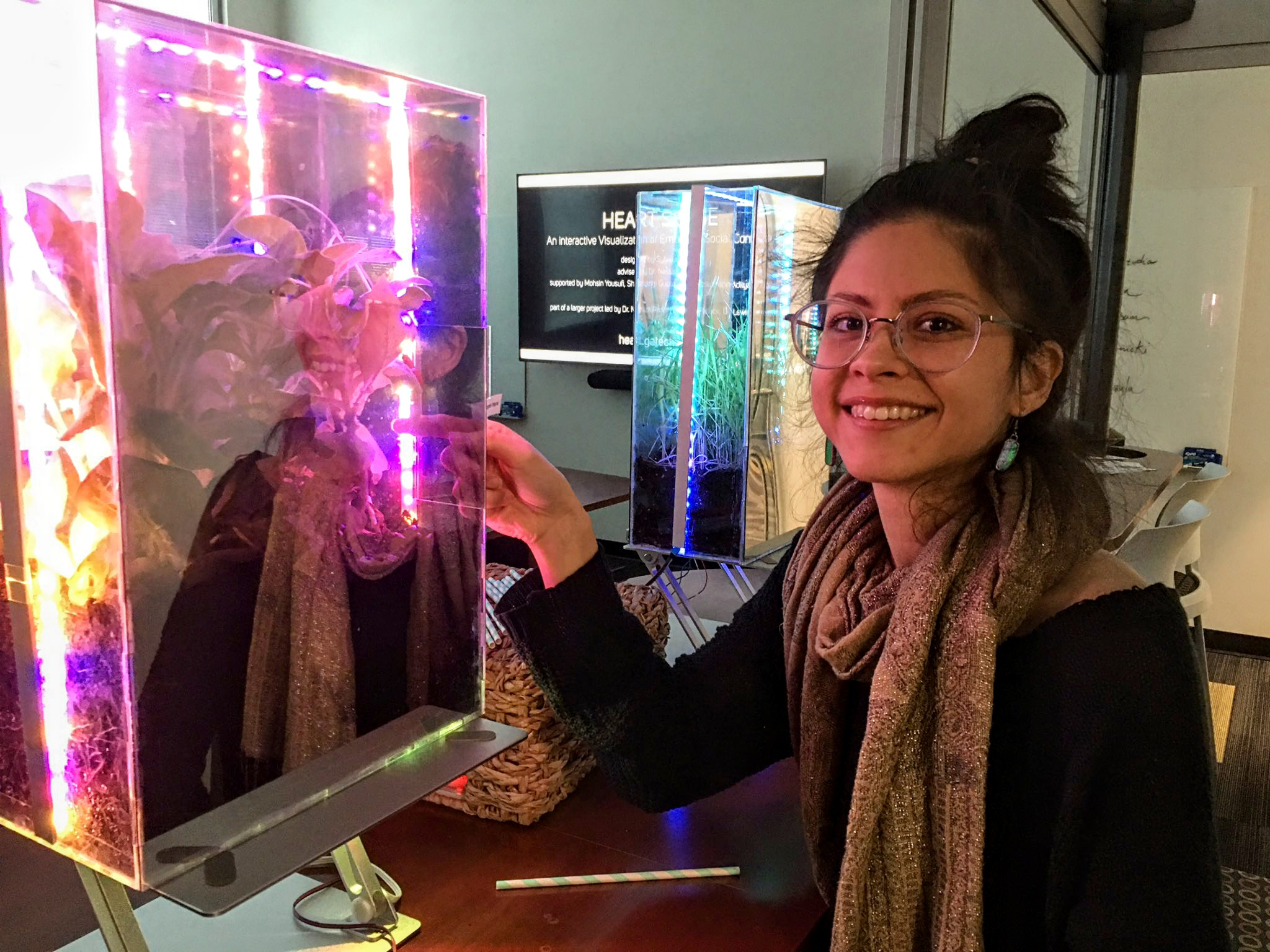
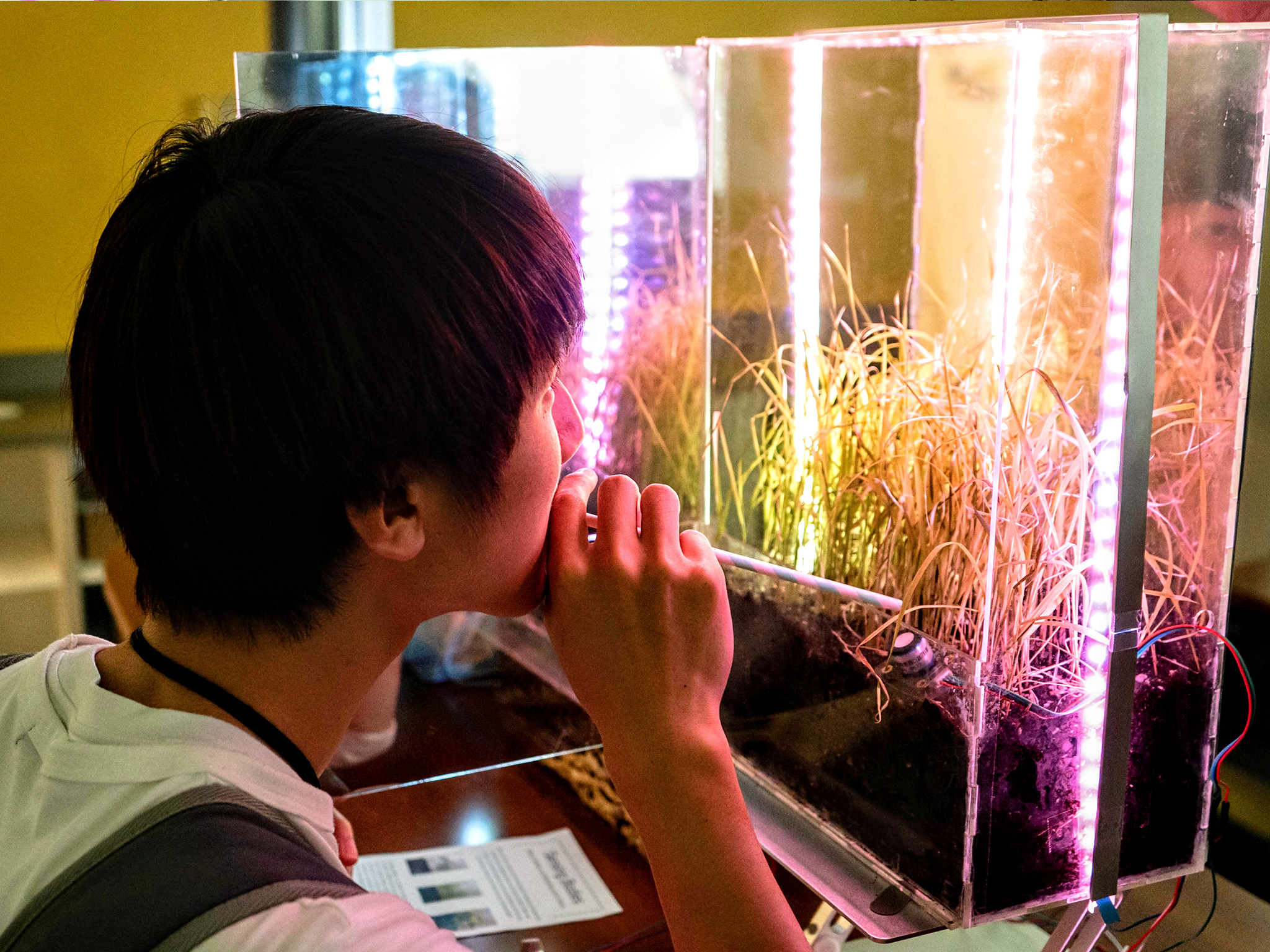
Society for Social Studies of Science/ESOCITE Meeting in Puebla, Mexico, December 2022
This exhibit featured plants entangled with colonial extractions of local forest ecologies in Mexico, including Chocolate Cosmos and Scarlett Sage, and a reflection on invasive/native plants.
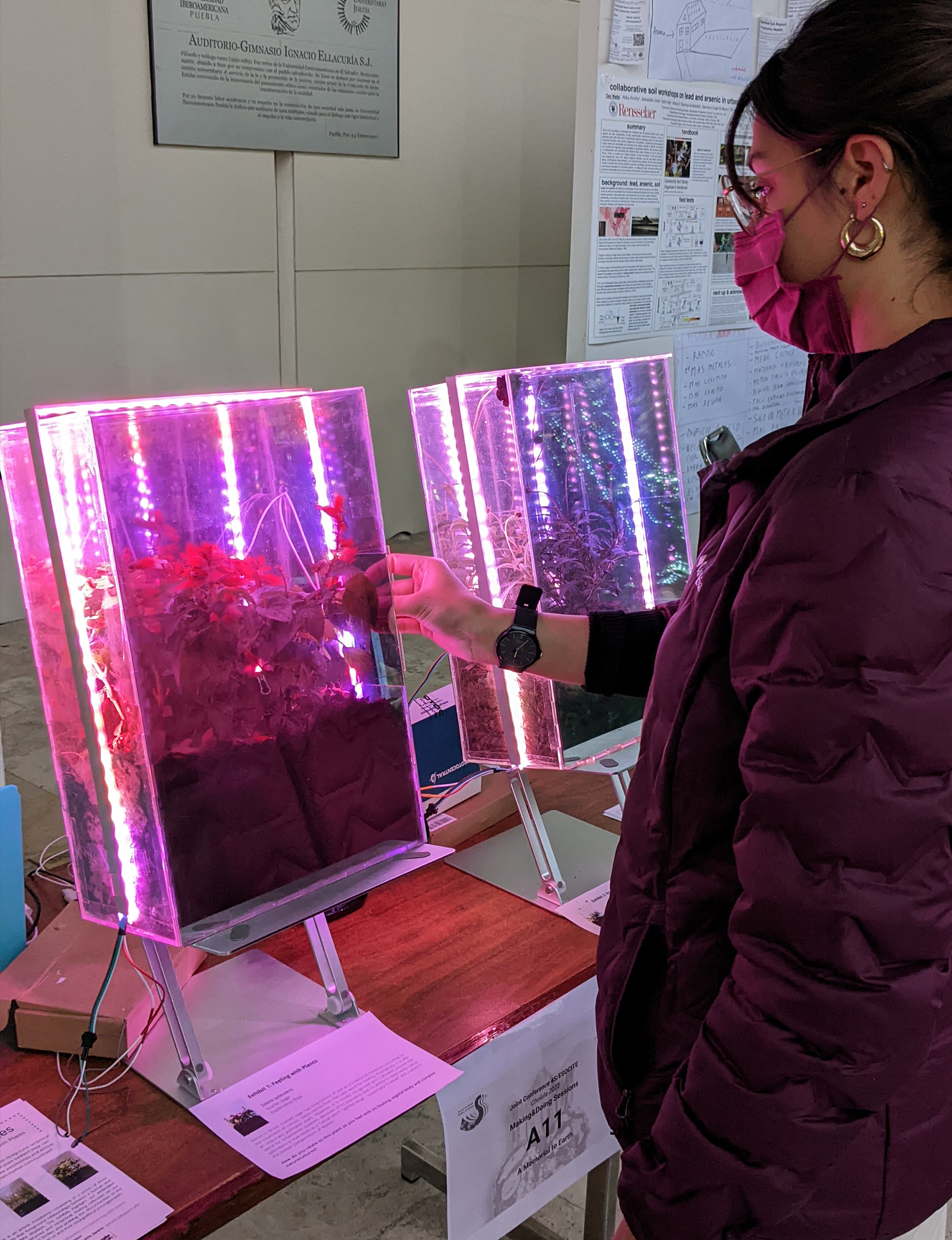
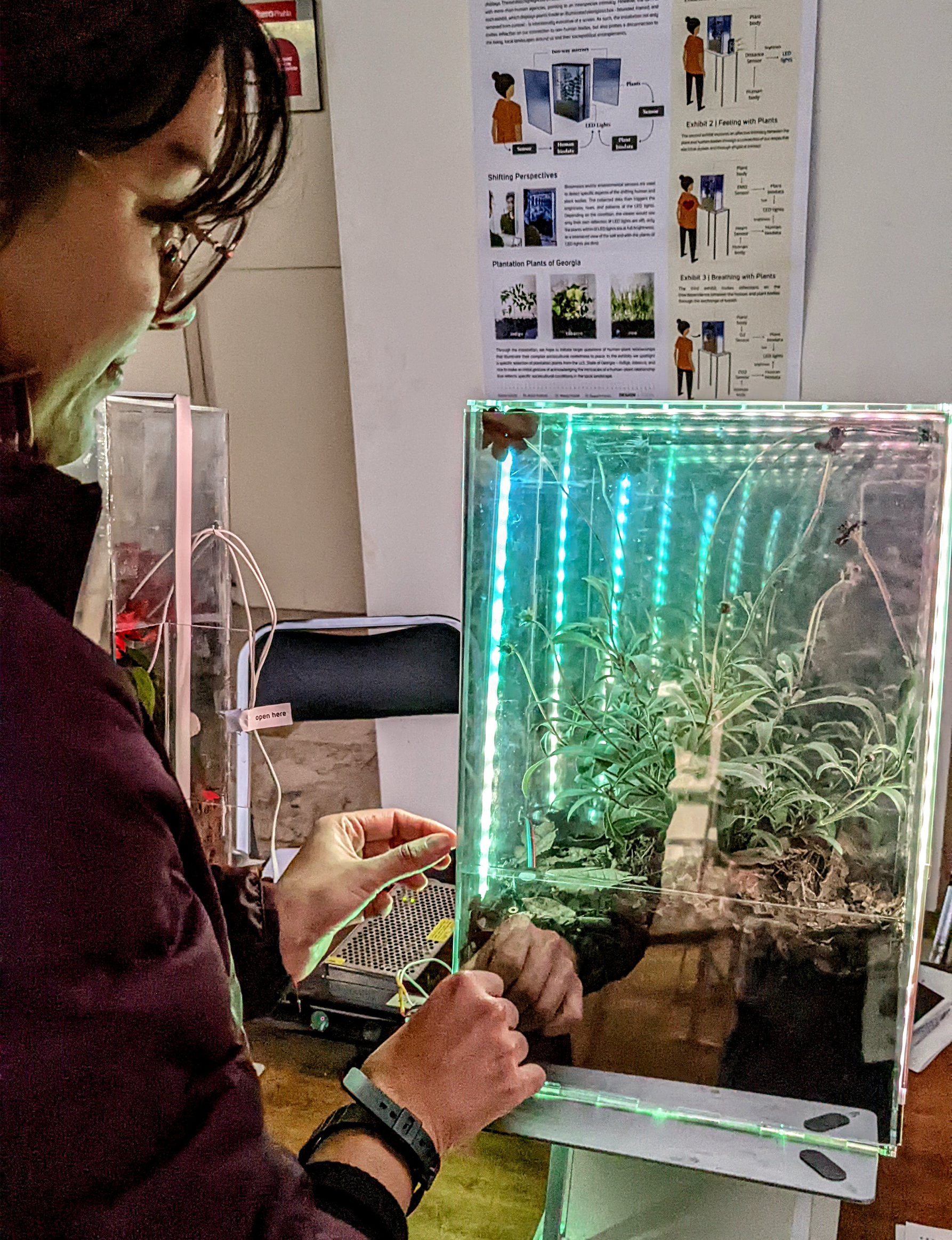
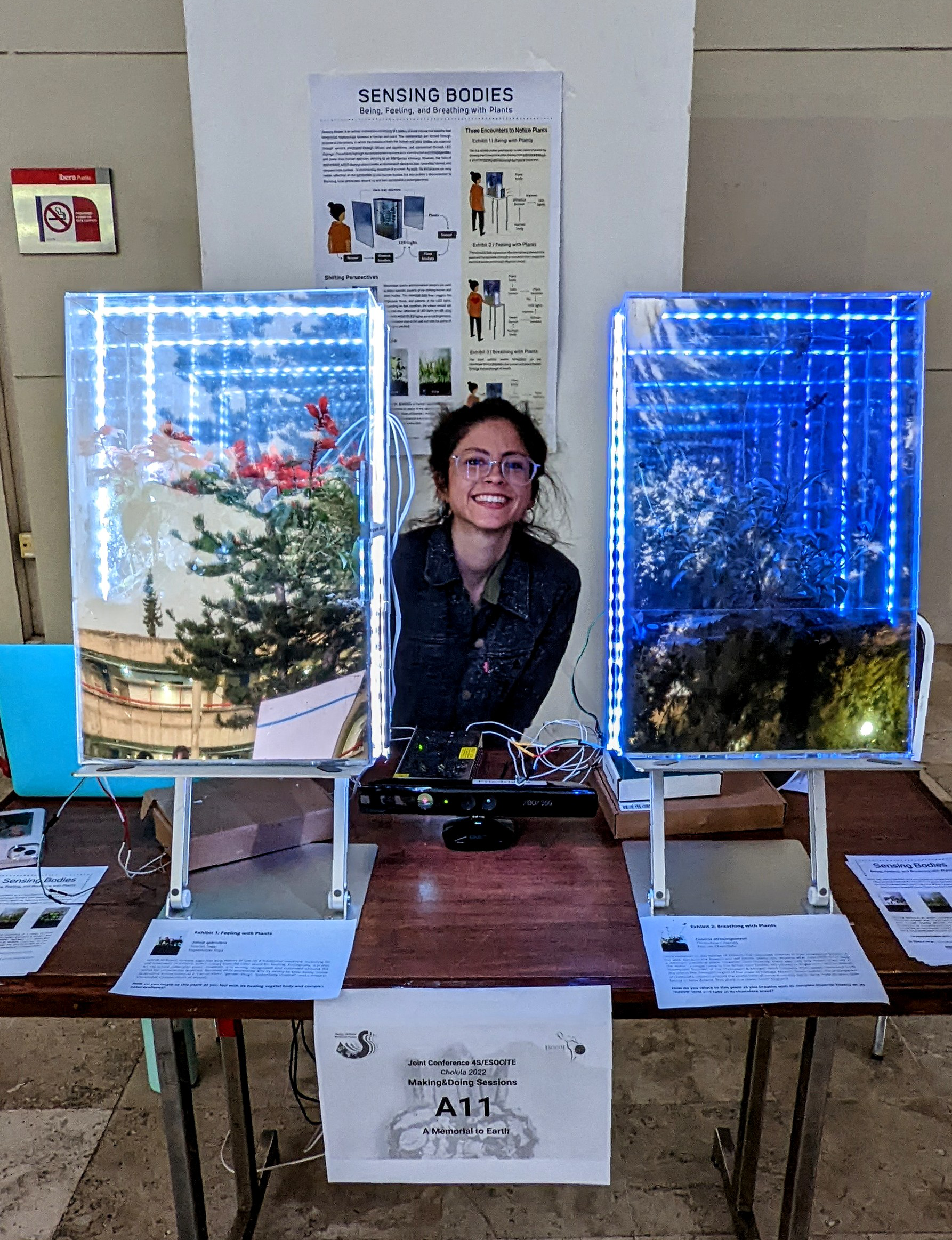
Reproductive Salon/Reproductive Immersion in London, England, May 2023
This exhibitshowcased herbal medicinal plants used for healing women’s bodies, including Celosia and Fennel, generative of reflections on reproductive entanglements.
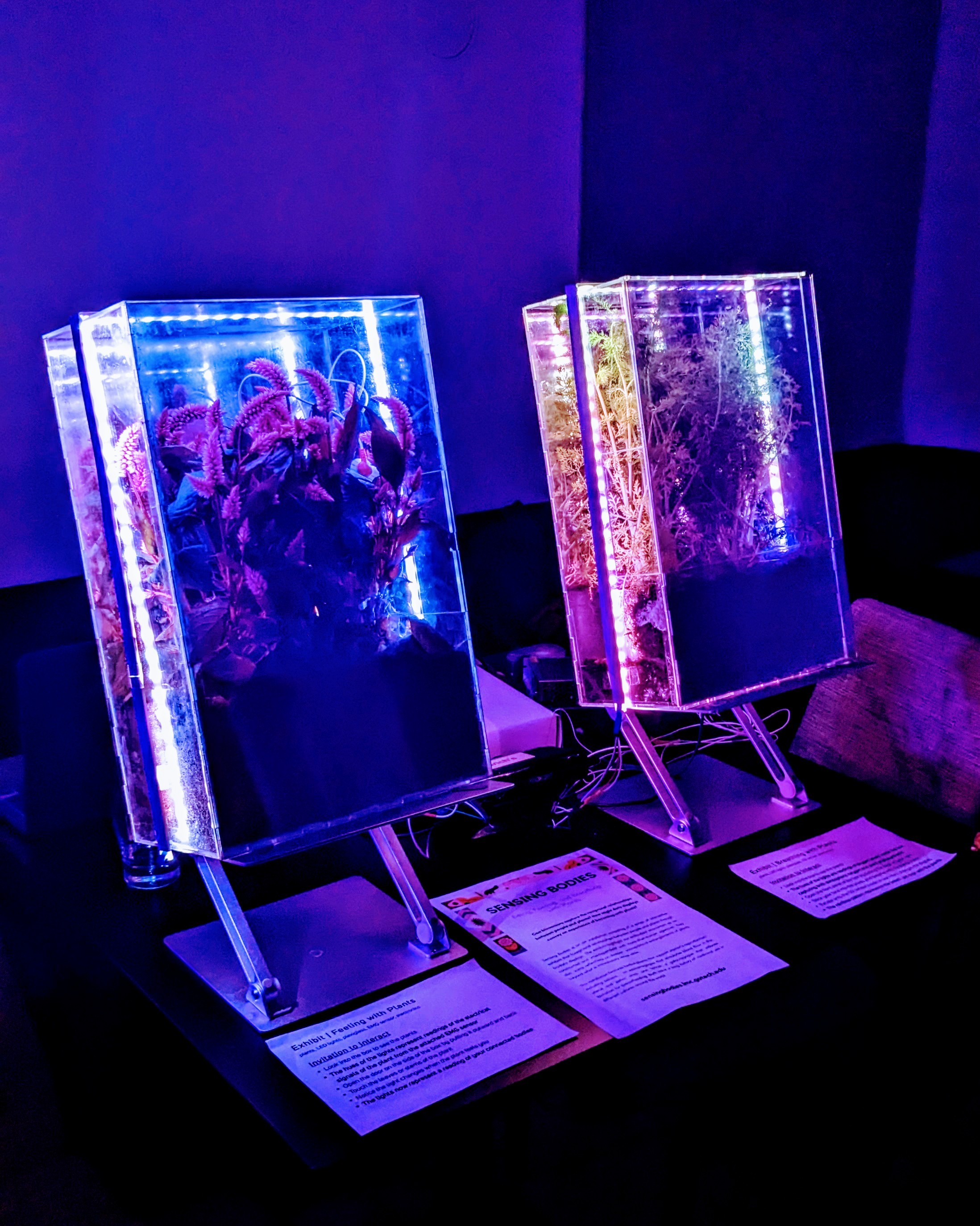
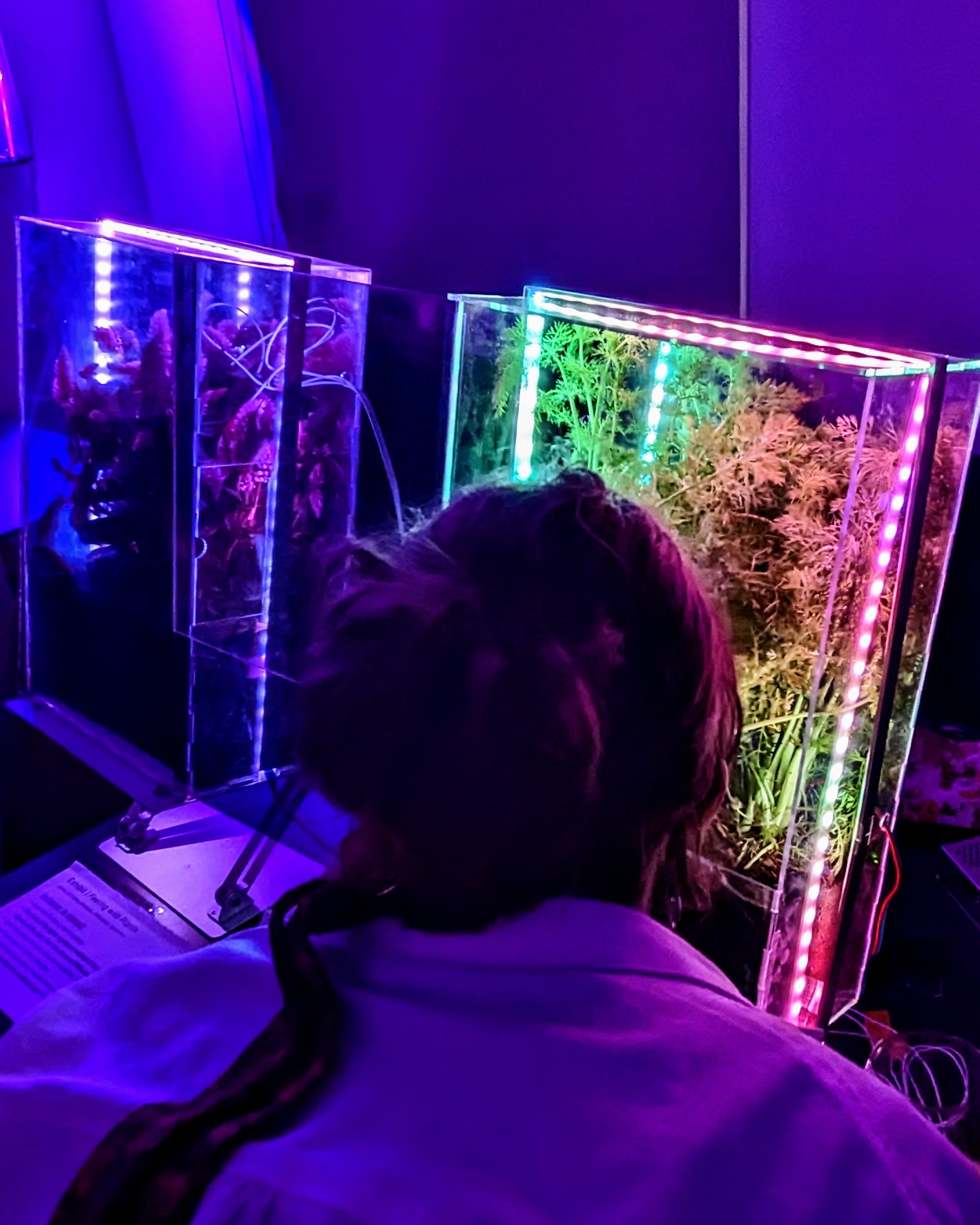
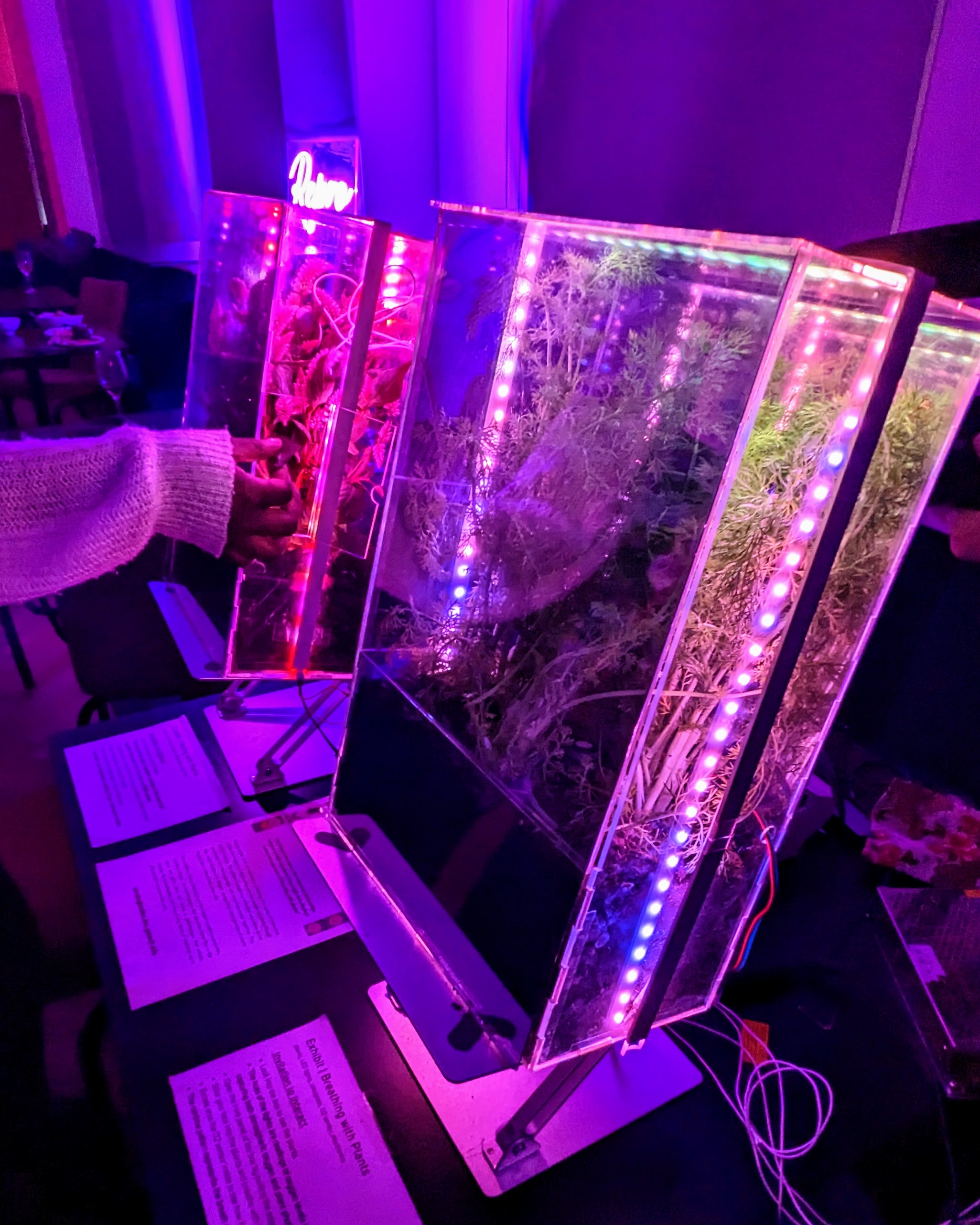
PUBLICATIONS and PRESENTATIONS
[1] Sylvia Janicki, Anne Sullivan, Noura Howell and Nassim Parvin, "Becoming with Plants: Reflecting on Human-Plant Relationships through Biodata Displays of Bodily Encounters," in preparation
[2] Sylvia Janicki, “A Memorial To Earth.” Presented at the Society of Social Studies of Science (4S)/ECOCITE Annual Conference, Universidad Iberoamericana, Cholula, Mexico, December 6-10th, 2022.
[3] Sylvia Janicki, "Sensing Bodies." Exhibited at Reproductive Salon/Reproductive Immersion, King's College, London, England, May 31st, 2023.
